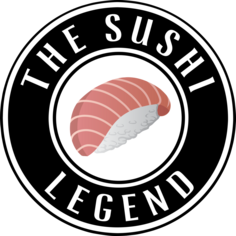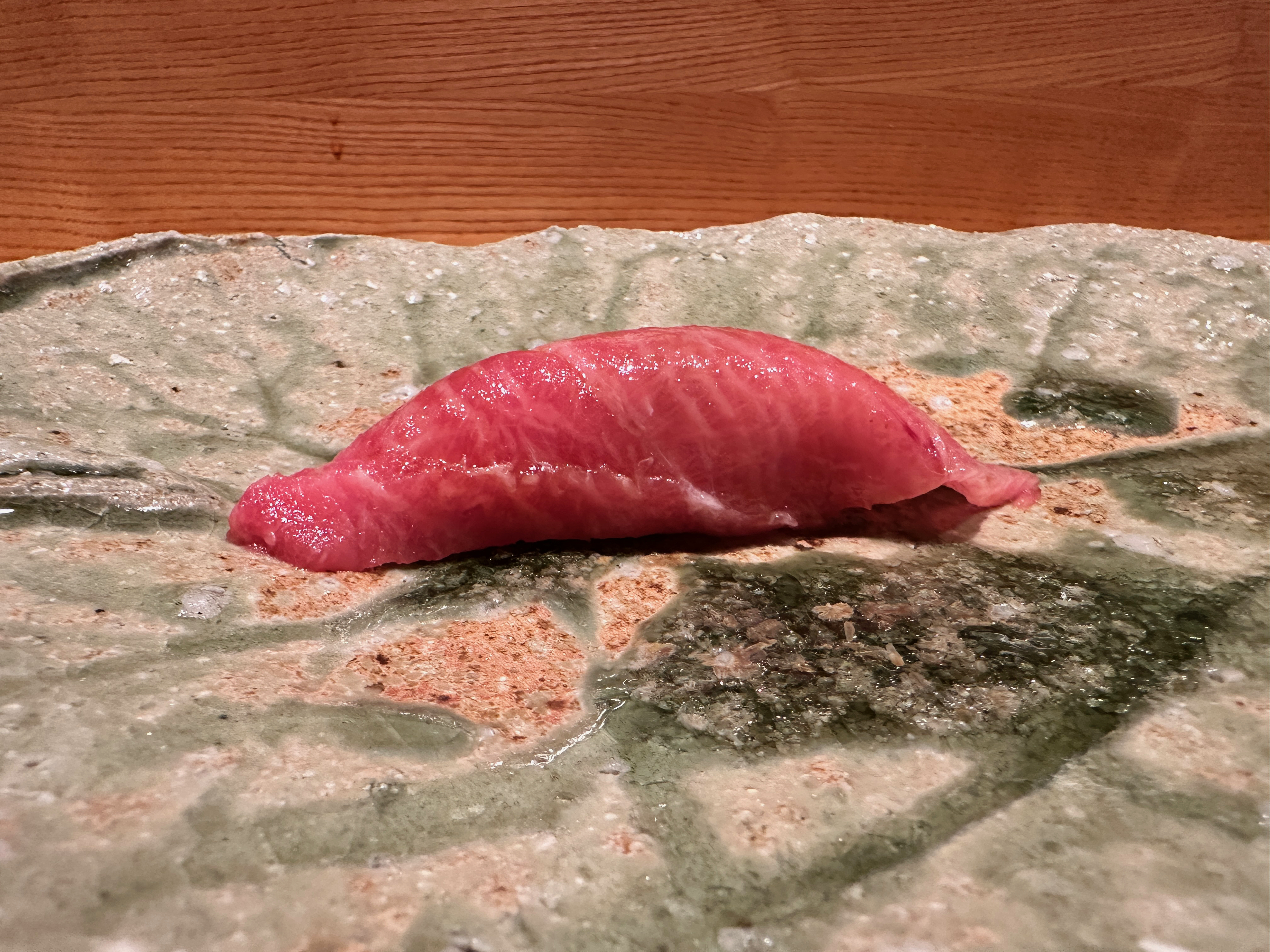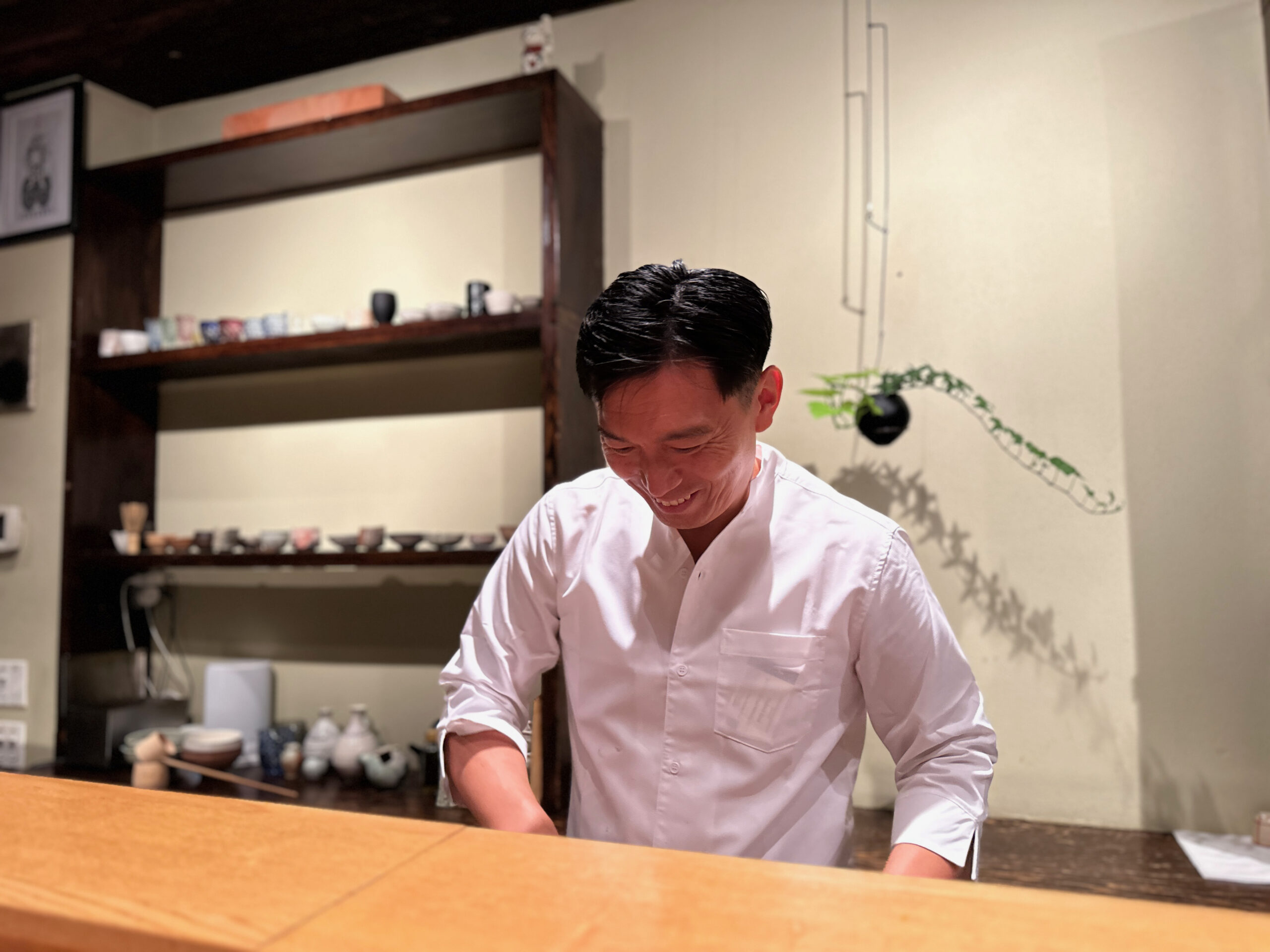
Nobu-san behind the counter
I finally returned to Kanoyama after a decade
Lost track of time / Lost track of time / As time goes by / As time goes by / As time goes by / As time goes by / As time goes by
– Pachanga Boys, “Time”
That track, an absolute marvel of melodic euphoria, has been stuck, nameless, in the recesses of my brain for 10 years. Every hacky google search to find the title of this spoonful of ambrosia came up empty. That is, until the other day, when it popped up in my YouTube algorithm like some golden whack-a-mole. Time. Coinciding with a return to legendary New York City sushiya, Kanoyama, also after 10 years. The lyrics were appropriate: Lost track of time. I believe that’s what people in the biz call a “double entendre”.
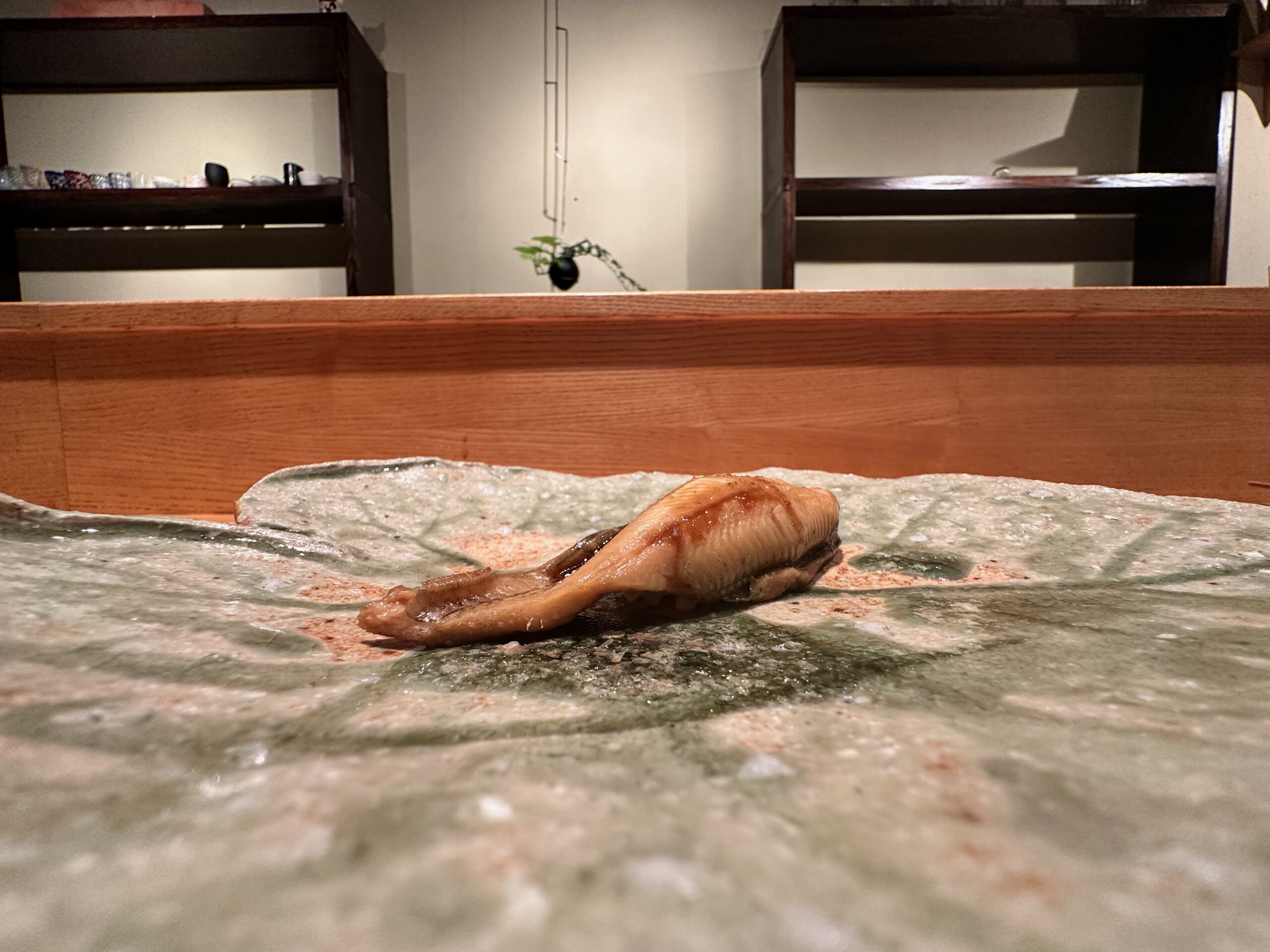
This is the easiest review I’ve ever written
Kanoyama is a good sushiya that has the potential to be great. Taking that next step isn’t rocket surgery; you don’t need Gordon Ramsay (Gordon Ramsay 1.0 before anger became his brand). Sit down, young legends, and let me walk you through where it’s great, where it suffers, and ultimately why you should give it your attention.
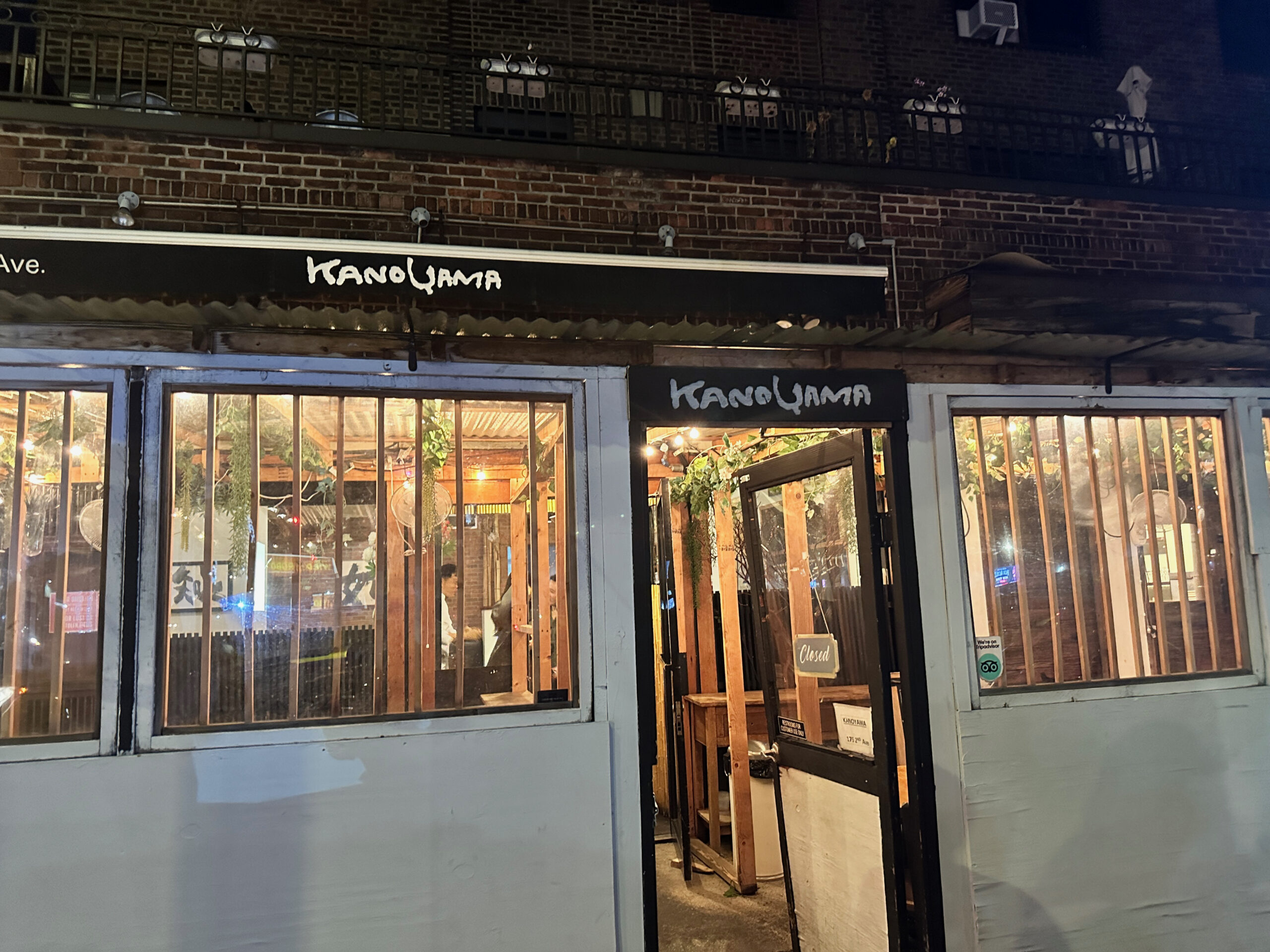
Outside Kanoyama
Let’s first set the table stakes
Kanoyama has two rooms; the first is a neighborhood-style sushiya, with robust a la carte offerings. The second has an Omakase counter with a few overflow tables from room 1. This blog/novel will focus on the latter – the $195 omakase, offered twice a night from Wednesday to Saturday. By the way, when I visited in 2013, the Omakase was $185. It’s gone up just $10 in 11 years. I love them already.
The Itamae is Nobuyuki Shikanai
Nobu-san doesn’t get mentioned along other New York City sushi legends, but he probably should be. He opened Kanoyama in the 2000s (fun fact: it formerly was called ISO, and Nobu-san was an apprentice there). It rose to prominence quickly; I still recall the omakase counter being revered when I moved in 2012. It earned a Michelin star in 2015, and I consider it one of the 7 sushiya that symbolized NYC sushi in the early 2010s.
But the Omakase boom has hurt Kanoyama
They lost their Michelin star in 2022, but fortunately they cling to the memory like its the elixir of life.
You walk into Kanoyama and there’s a card saying they used to have a michelin star. Behind the counter are seven Michelin placards. It’s a bizarre message: we used to be rated really highly.
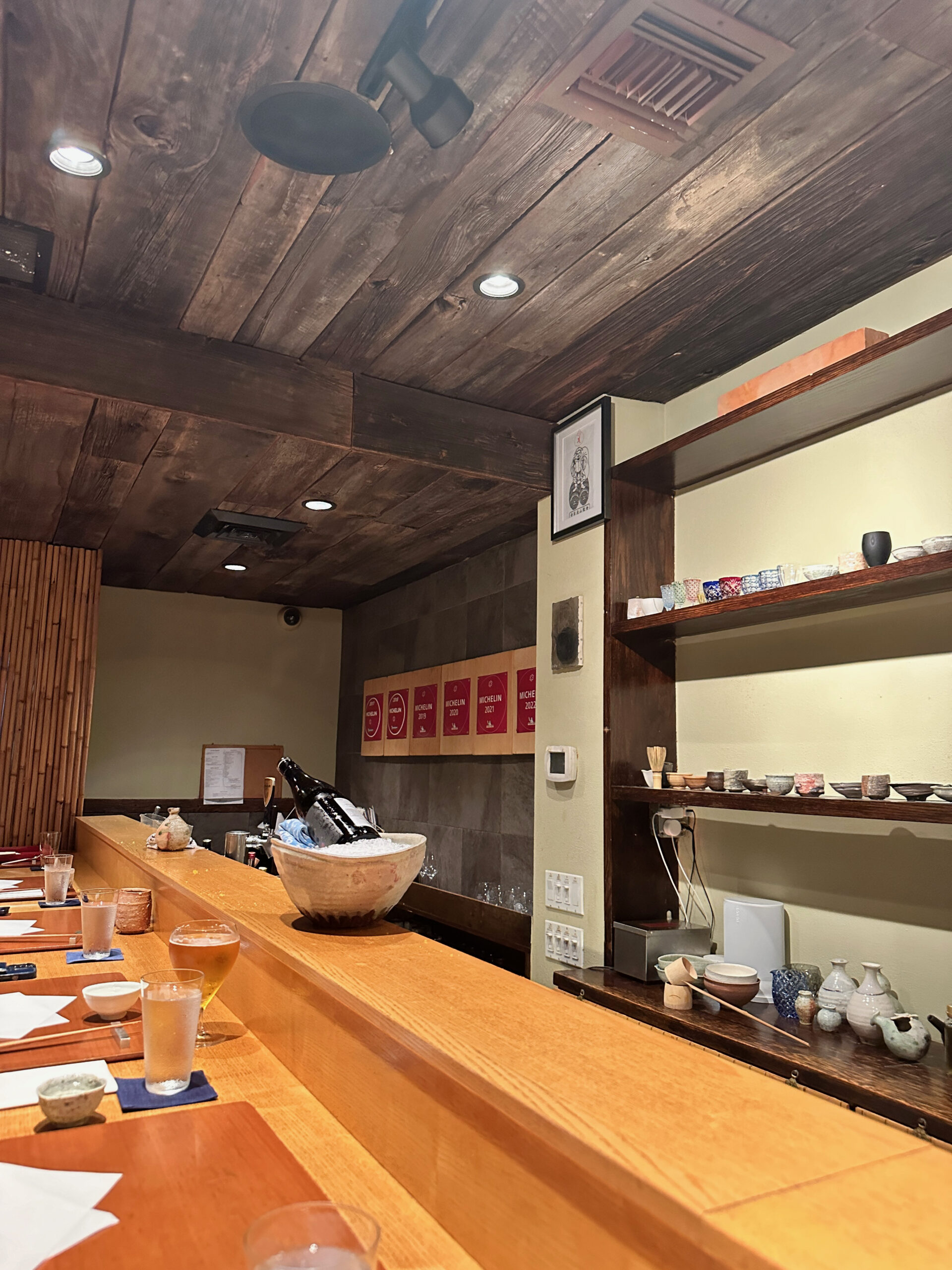
Kanoyama proudly displays the michelin stars they used to have
And half the Omakase seems like an attempt to get the stars back (similar to my quest in Mario Party 2).It’s almost like they watched chef’s table, and figured fancy gimmicks was their ticket.

1: Madai Matsutake Osumashi (essentially Clear Soup)
The first warning signs were course 2, a tomato salad with white jelly on top. The tomatoes were too big to eat whole, too small to bite. And oh boy, does Kanoyama love their jelly. This was the first of three jelly courses. Most I’ve had since I was hoovering jelly shots back at university.
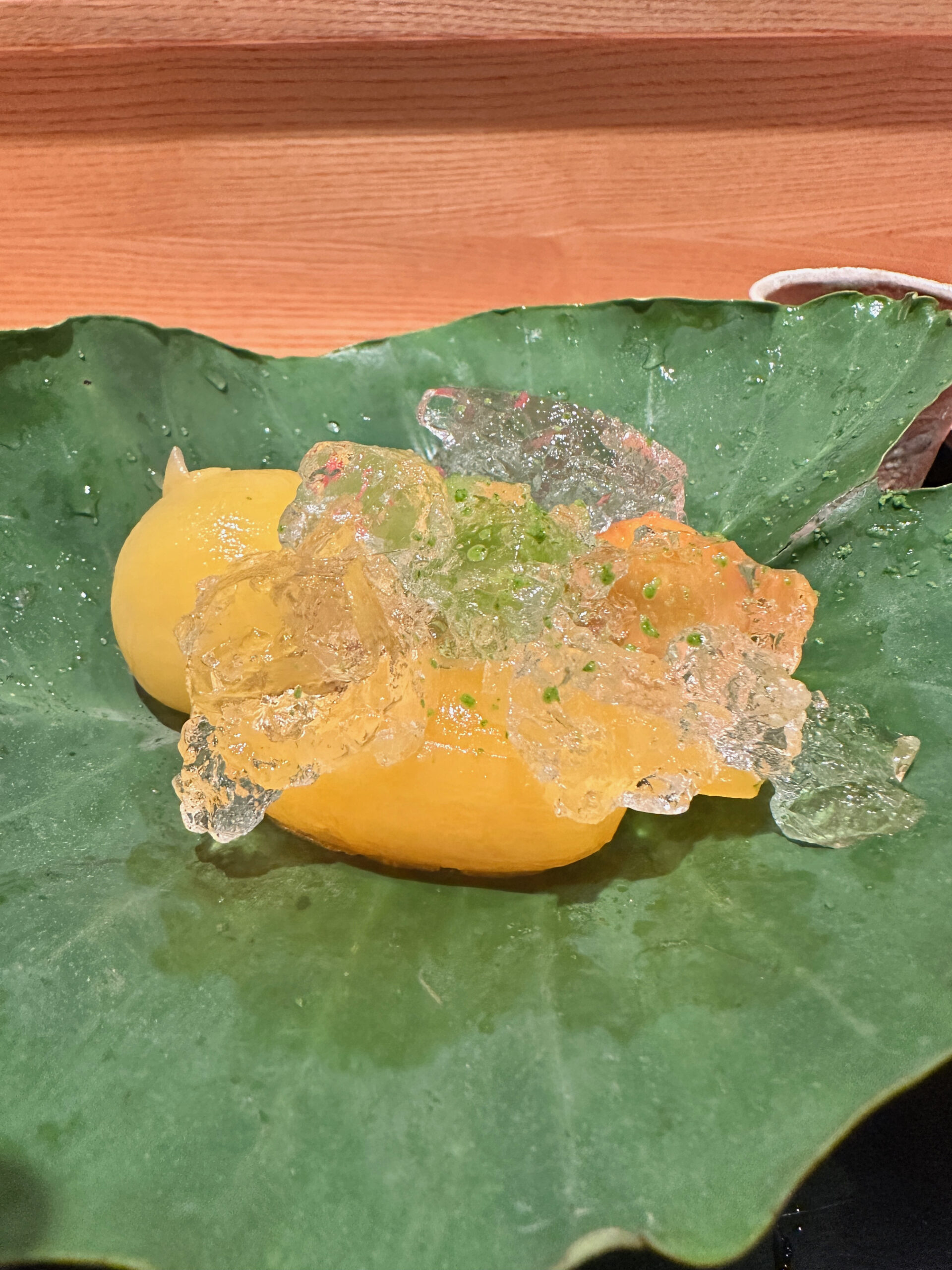
2: Tomato salad with white jelly and yuzu skin shaved on top
The best non-nigiri course
The Hirame with shaved Karasumi – Nobu-san is generous – and olive oil is fantastic. I did not expect olive oil to pair well with any sort of raw fish, but adding the creamy karasumi makes the whole thing work. This needs to be a staple. A fantastic few bites.
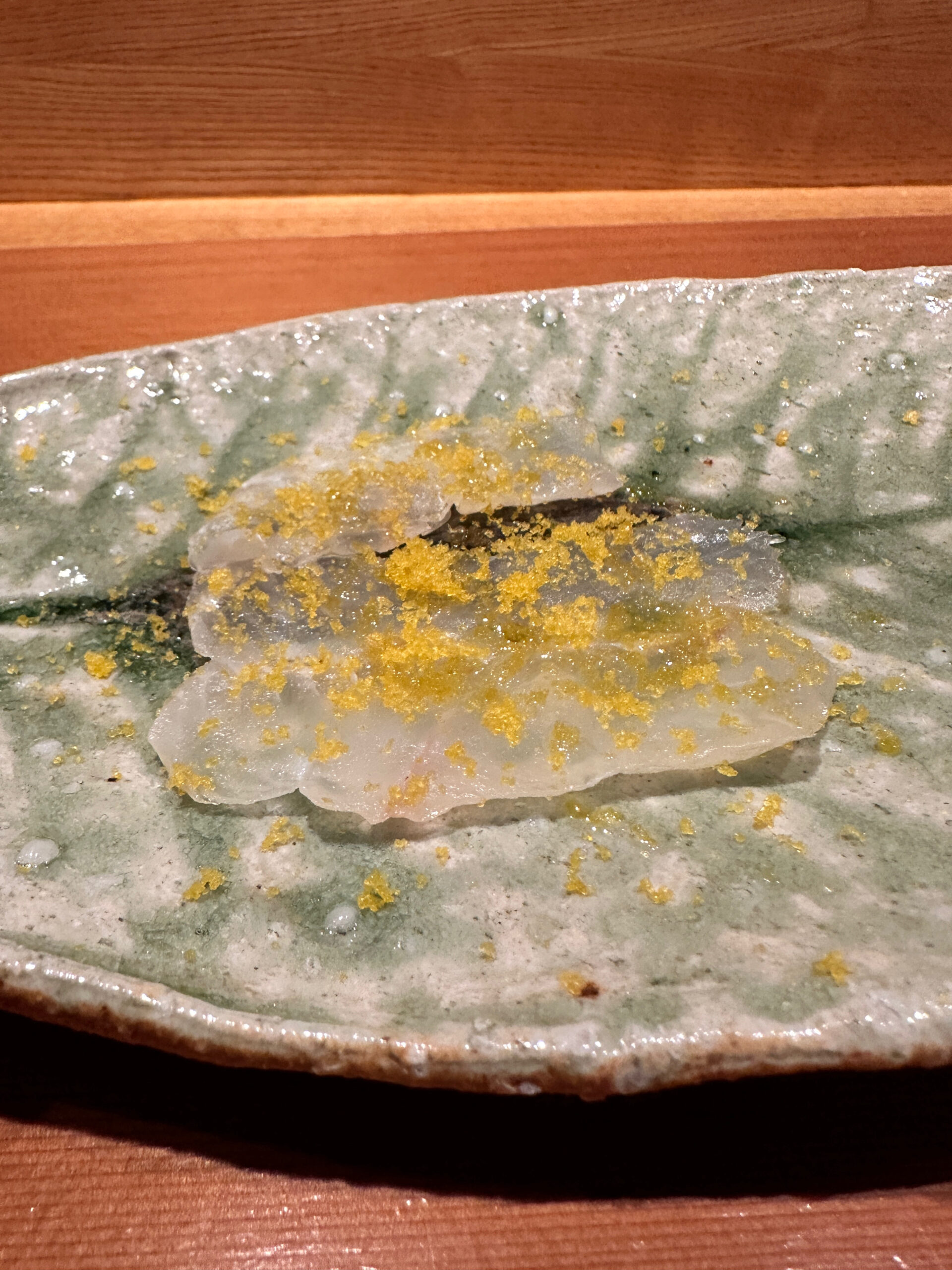
3: Hirame with Karasumi (dried shaved mullet roe) and olive oil.
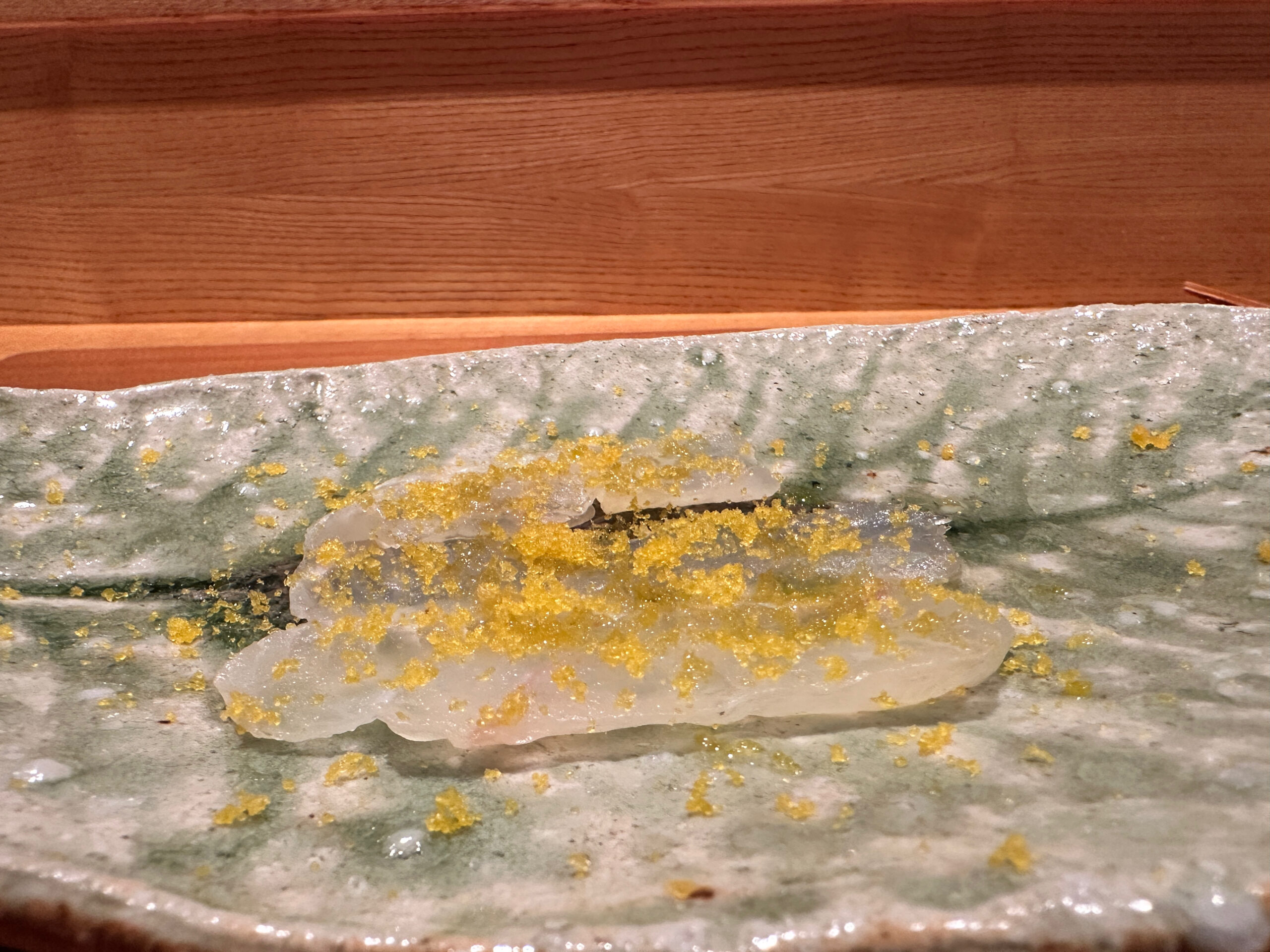
Another angle of the best otsumami
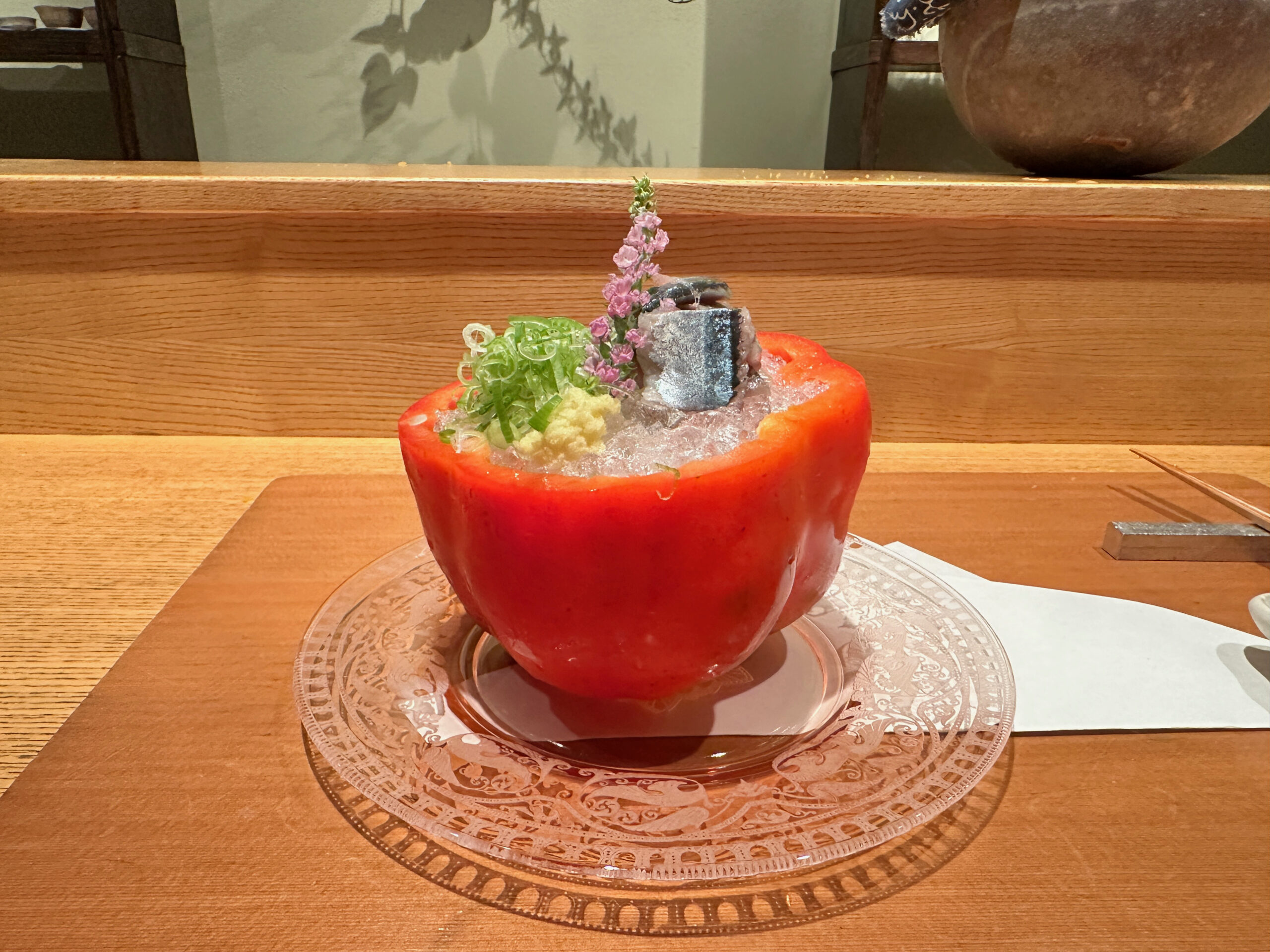
4: Sanma (good) with red pepper and shiso leaf flower
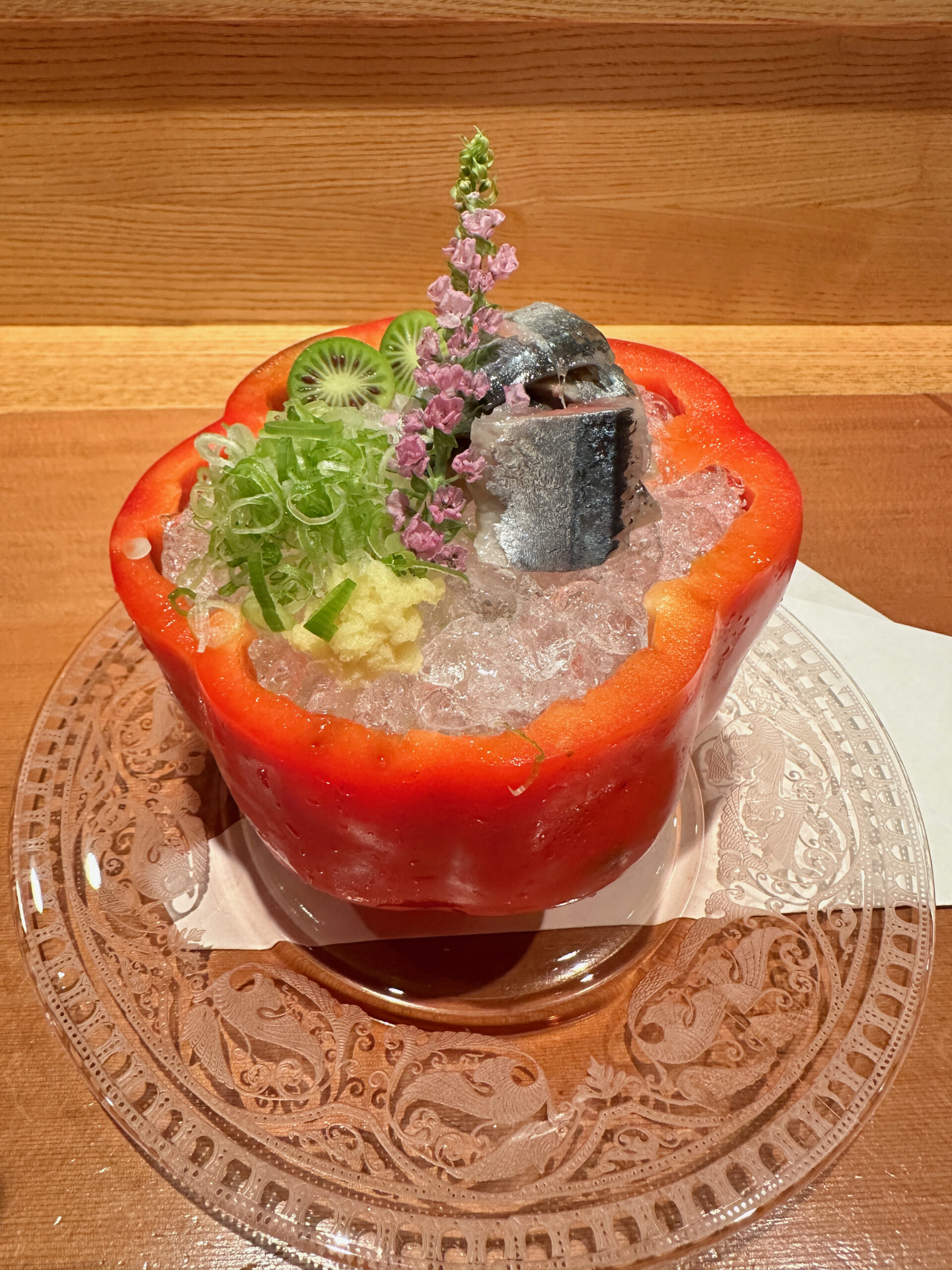
Another angle
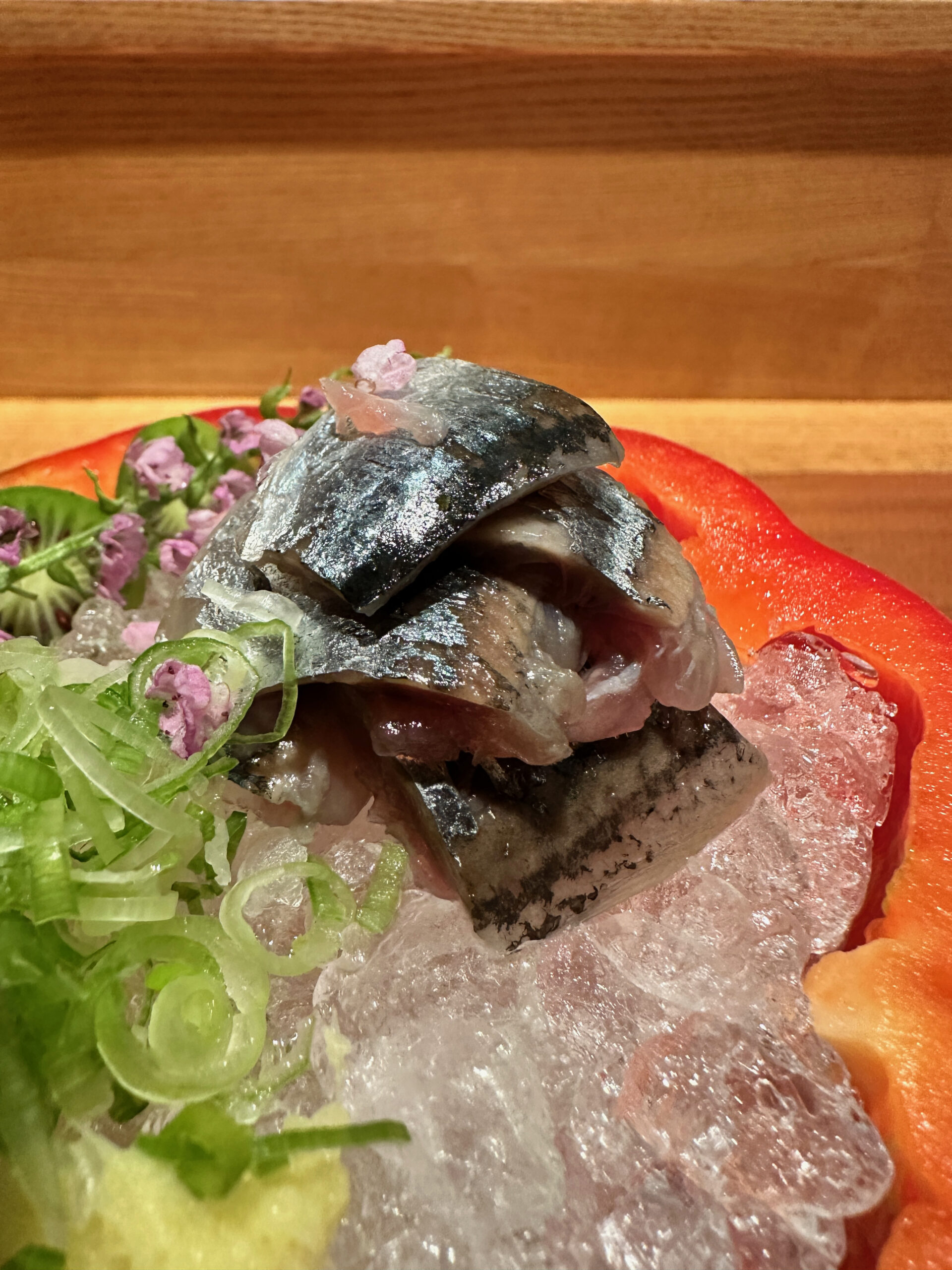
Fair play the Sanma was truly excellent
The fifth course was served on a fake oyster shell with fake smoke seeping out underneath. Too bad, because Kanoyama is better than magic tricks. And shocker, there was more jelly, along with confusingly coloured uni, and other anti-goodies. As good as the Hirame was, this was just as forgettable.
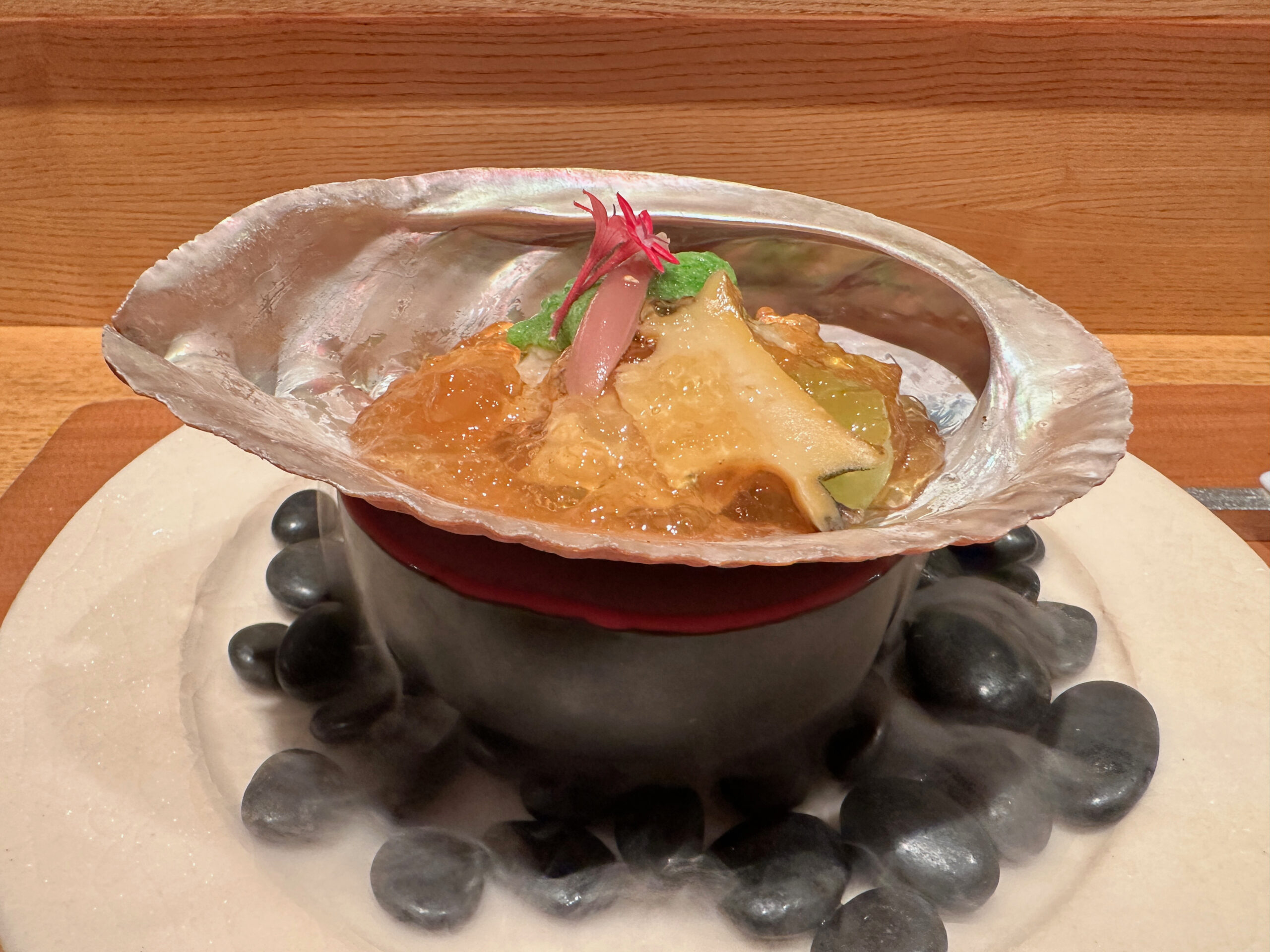
5: Tofu with Kegani, Tomatoes, Uni (that had seen better days), some jelly, all on a fake oyster shell with some smoke underneath
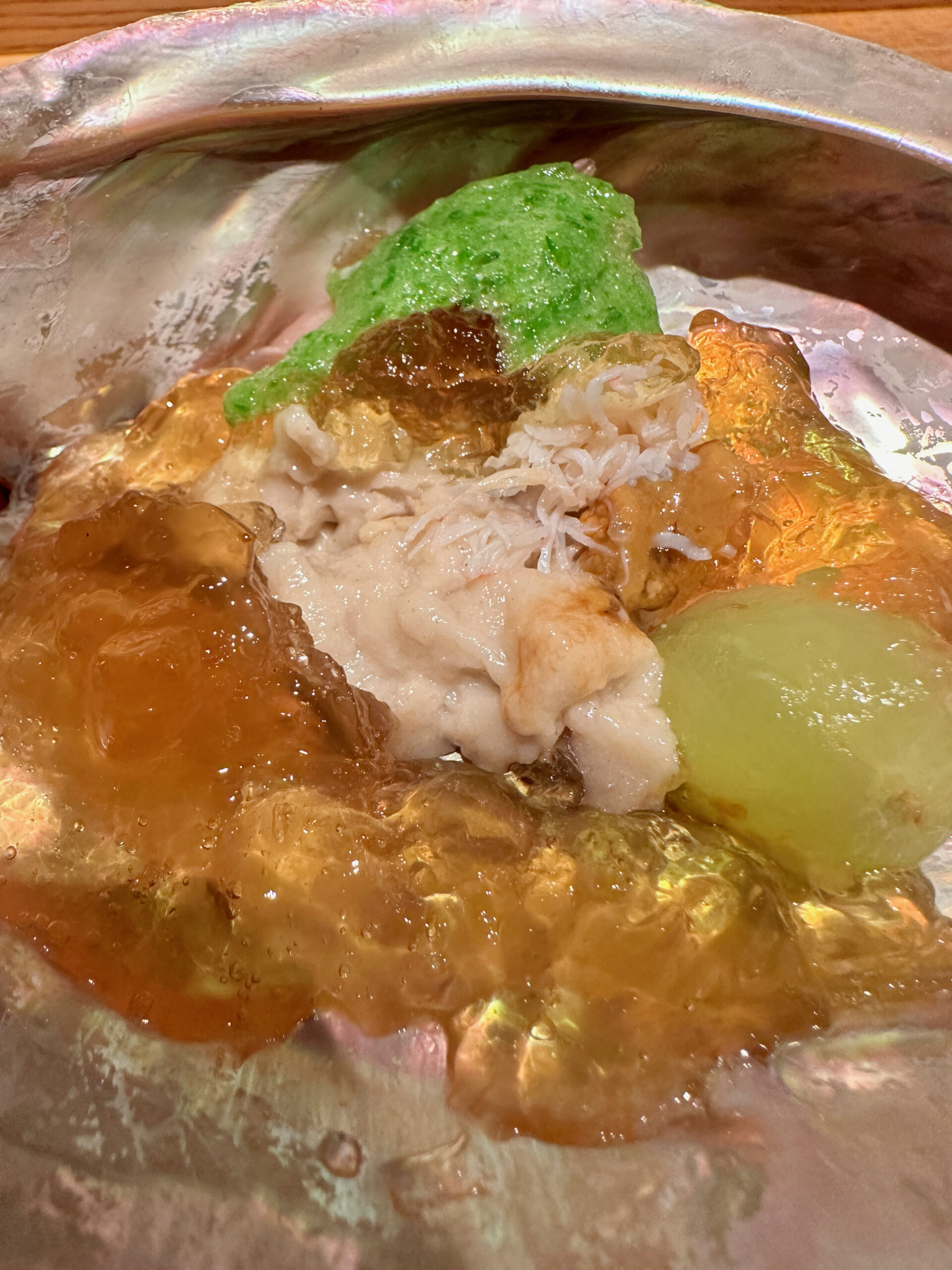
Another angle of the Tofu/Uni/Kegani mix – the less said about this the better.
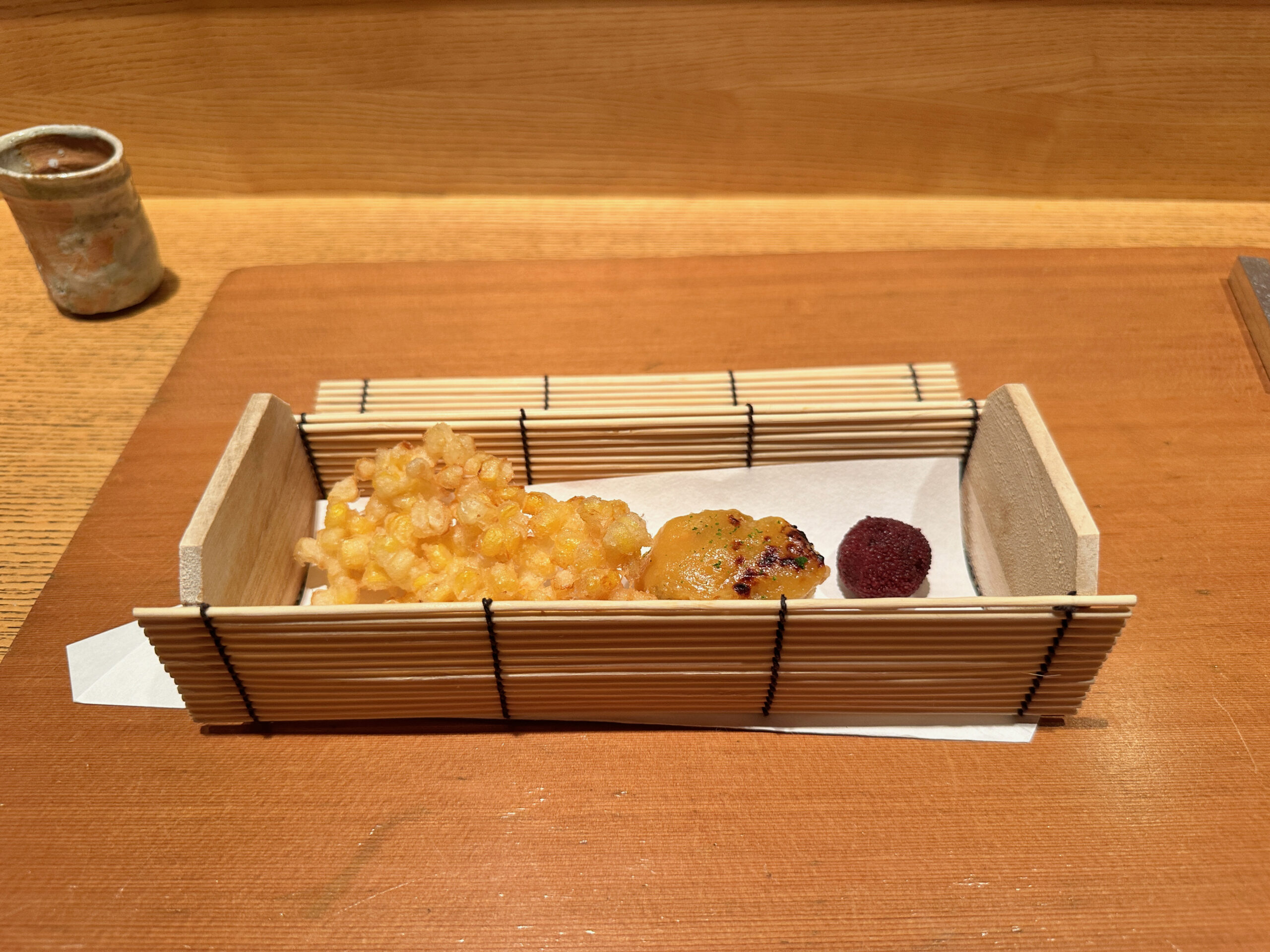
6: Mountain fig with corn tempura
It doesn’t help that those first six courses took two hours.
Not a typo. I’ve said it before and I’ll say it again: long meals are antithetical to the foundation of sushi. I’m not against a Botan Hamo and Junsai at Ichimura or Awabi w/liver sauce at Yoshino, but even those marvelous courses aren’t the reasons I’m addicted to sushi. And I suspect many of you are the same
At 10:30 pm EST (12:00am in the great province of Newfoundland and Labrador), we finally had our first piece of sushi. Fortunately, it was worth the wait.
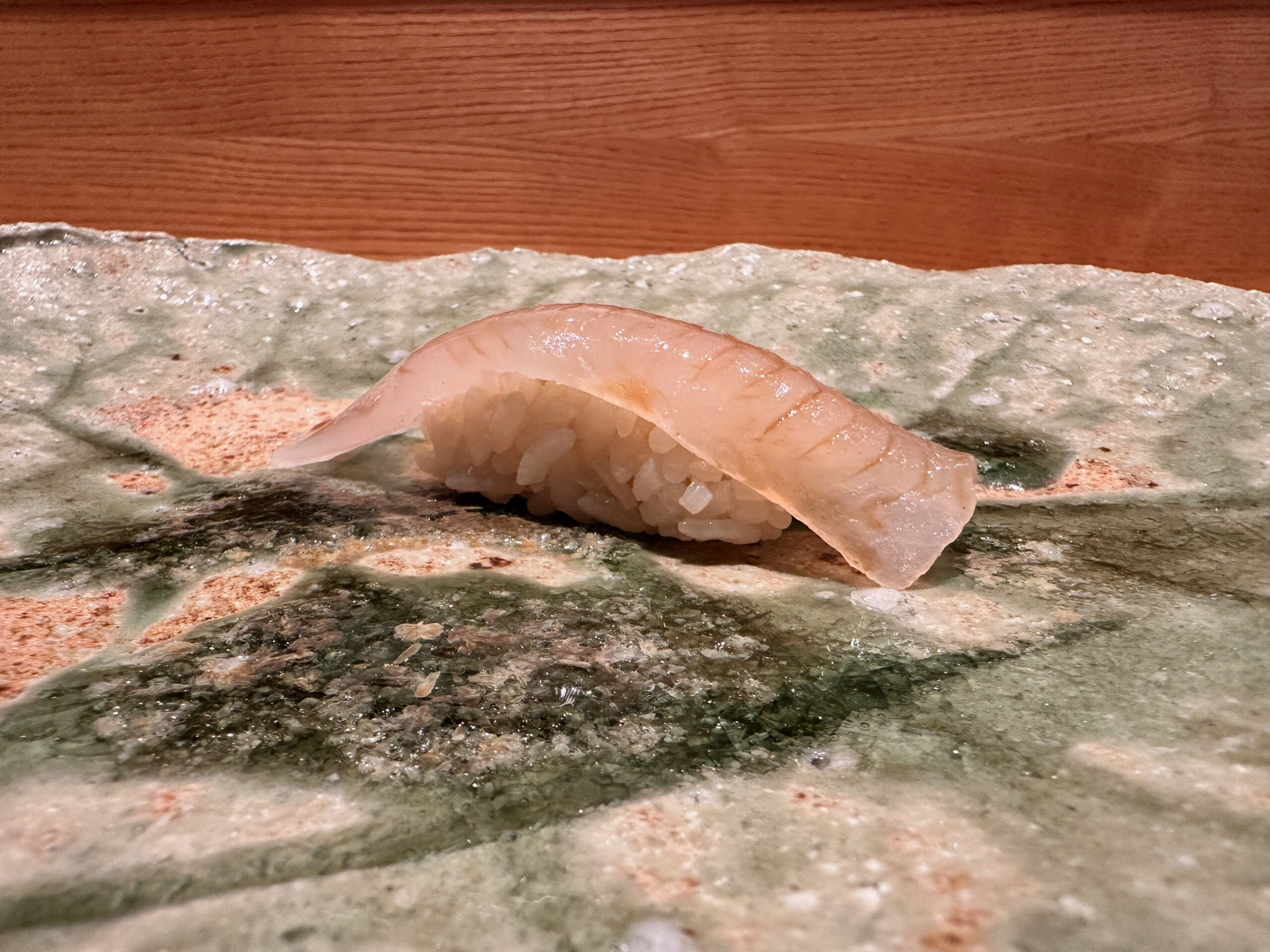
1: Kisu
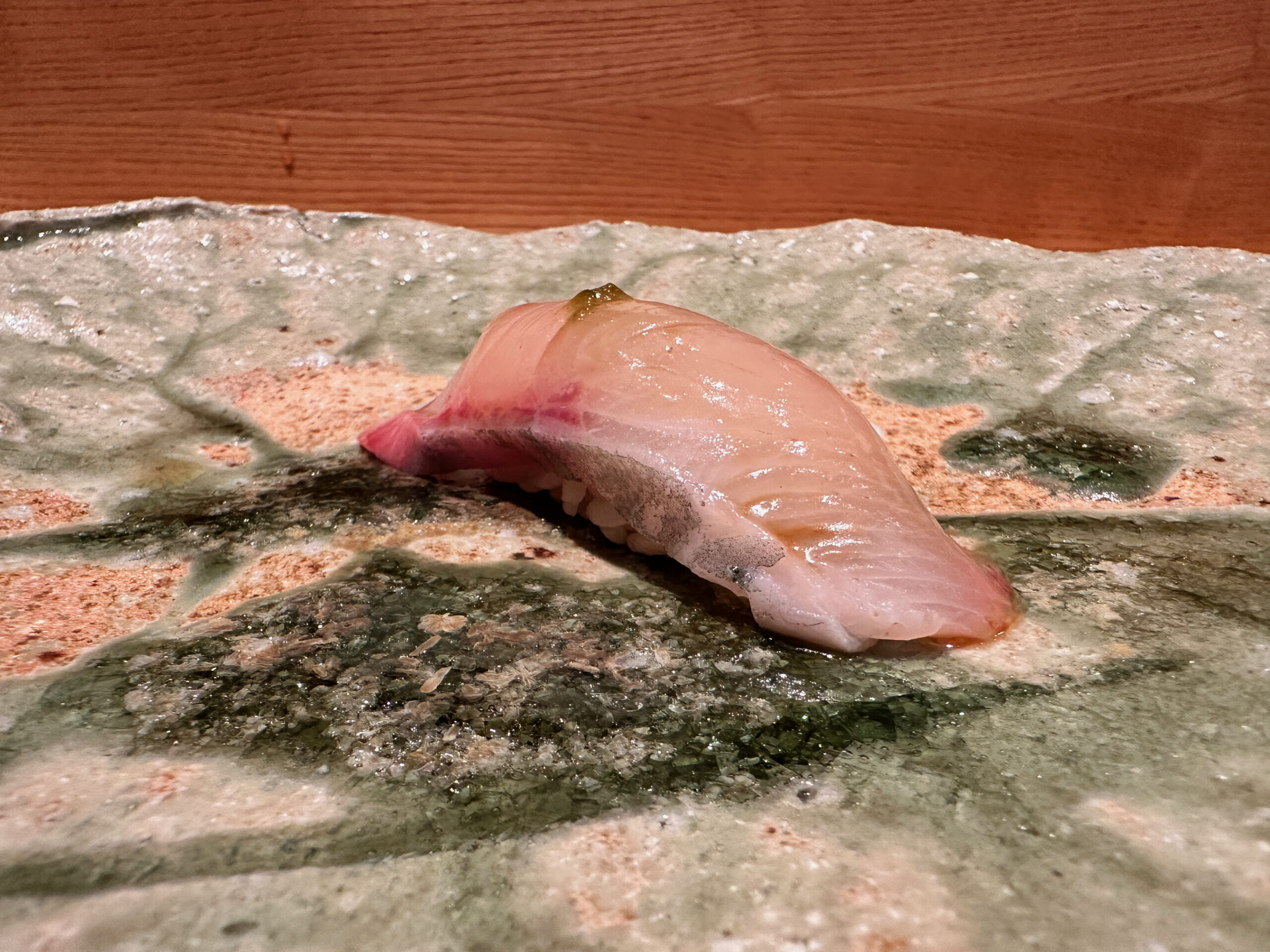
9: Kanpachi
The nigiri in Kanoyama’s omakase is absurdly excellent
I’m not surprised – Nobu-san is a legend for a reason. But at $195, even with a few non-sushi “dogs”, it’s atypical. He slices longer neta (toppings), which serves well for something like the Katsuo (bonito). Katsuo is fascinating: it’s in season twice. The first is in spring, Hatsu Gatsuo, when it leaves. The second, called Modori Gatsuo, is when it returns filled with fat, weighing twice as much. And it’s what he served here. Some find it too greasy. I find it succulent.
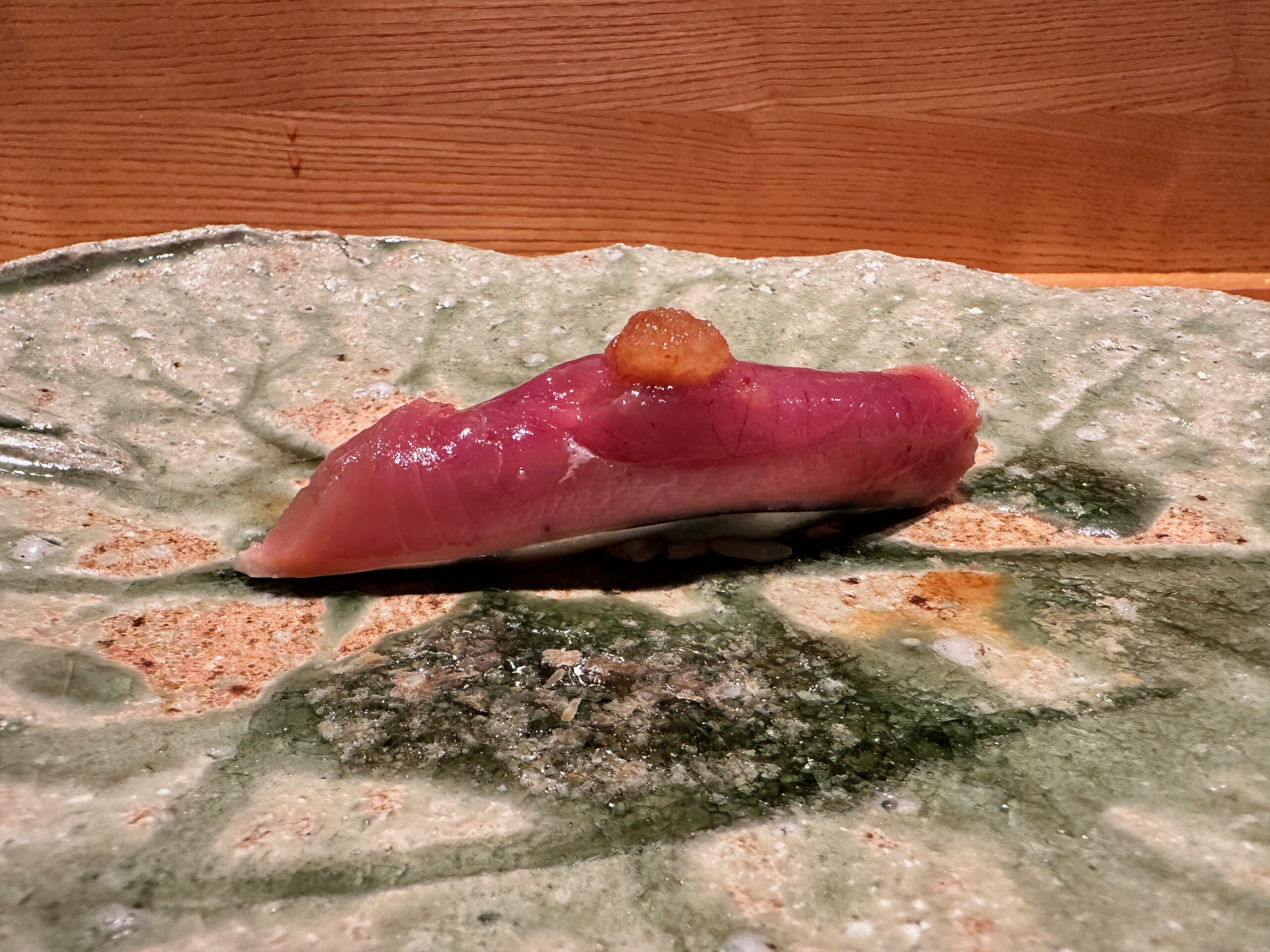
10: Katsuo (returning katsuo – modori gatsuo)
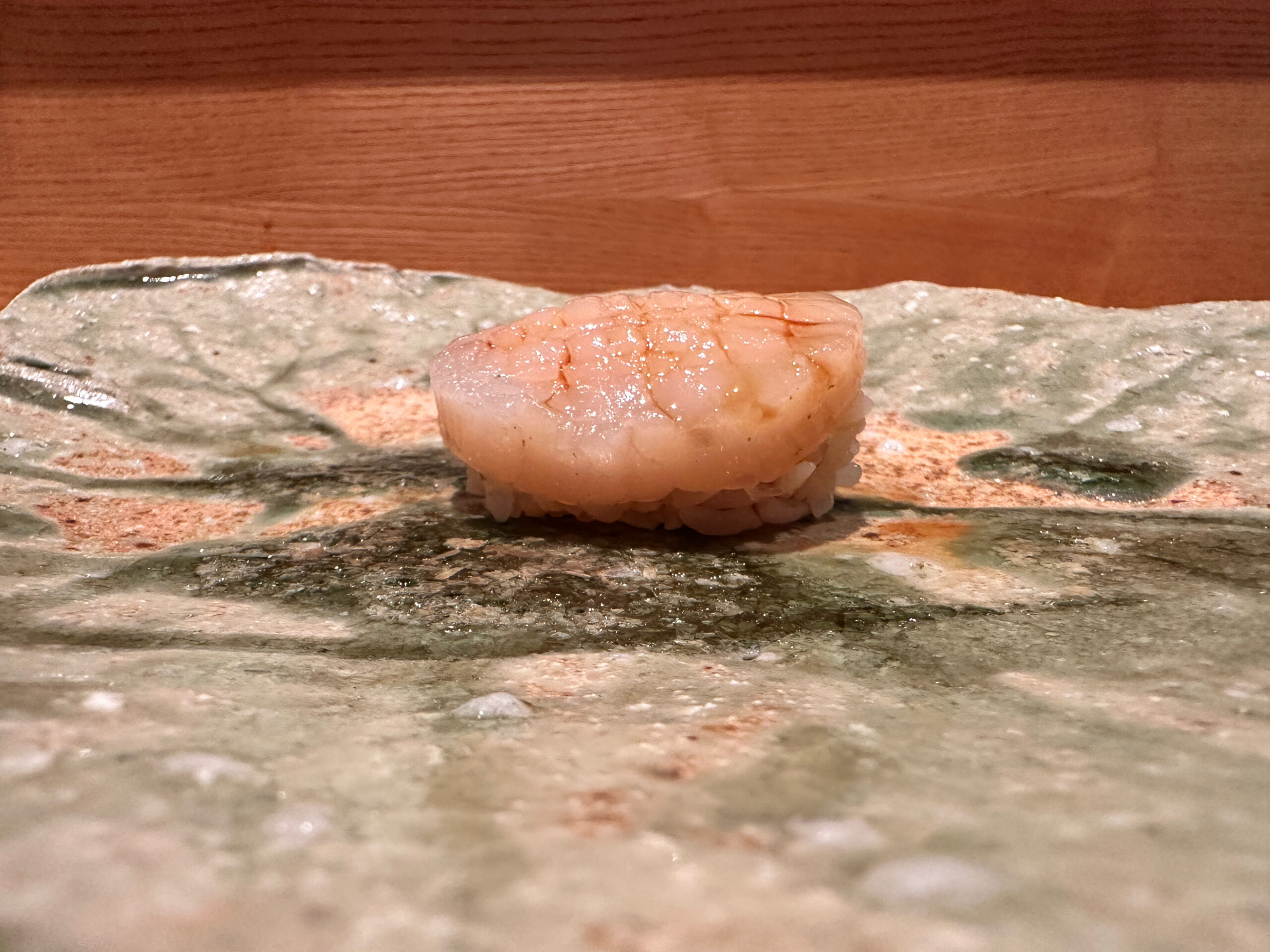
11: Hotate
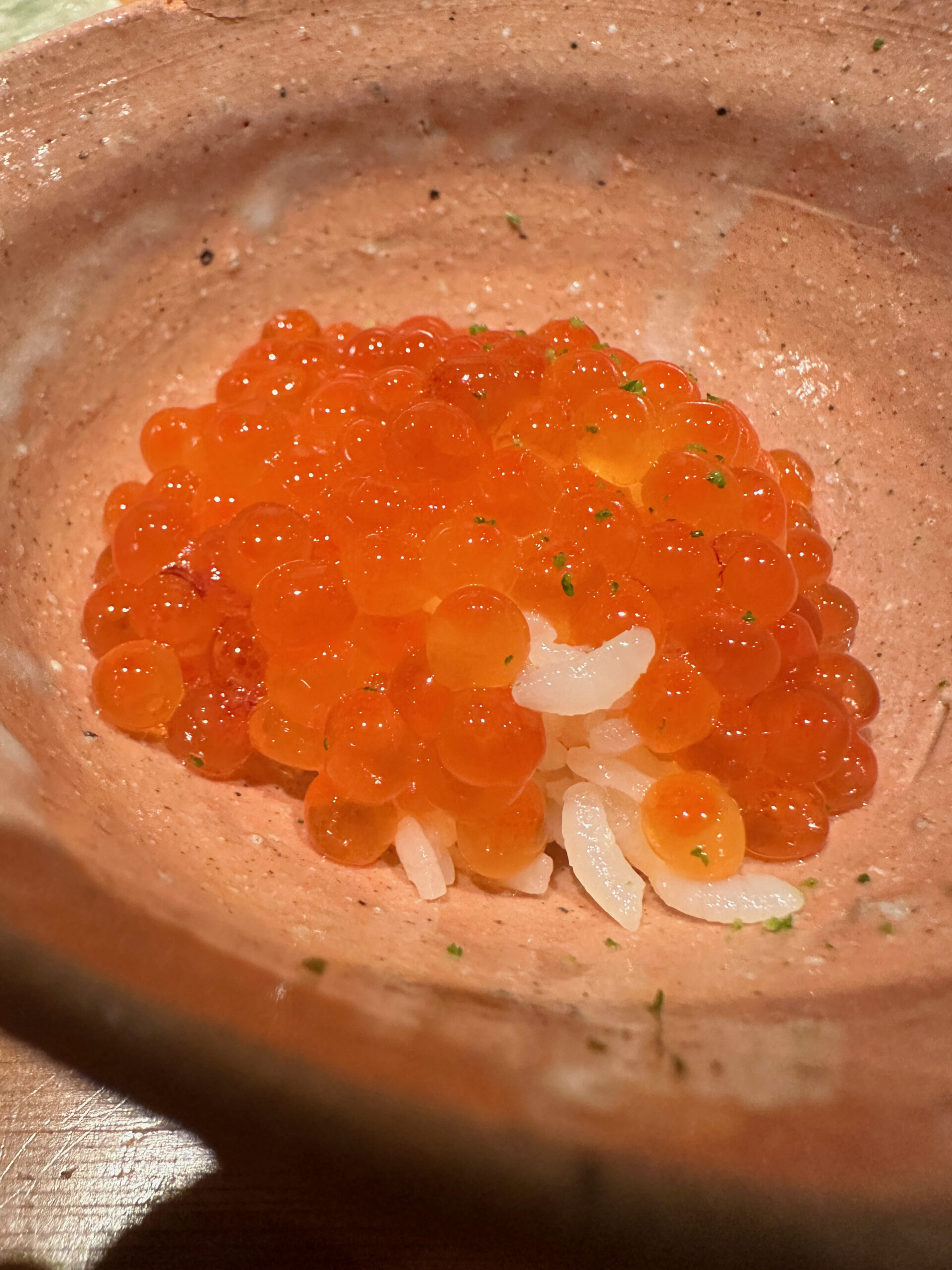
12: Ikura
Another neta that’s in season is Ama Ebi (pink shrimp), exhibit A for why great shrimp goes beyond typical Ebi, aka the rubbery boiled shrimp often seen at sushiya. And yes, it’s served with its head fried separately, as is tradition. More sushiya should do this. We can handle it.
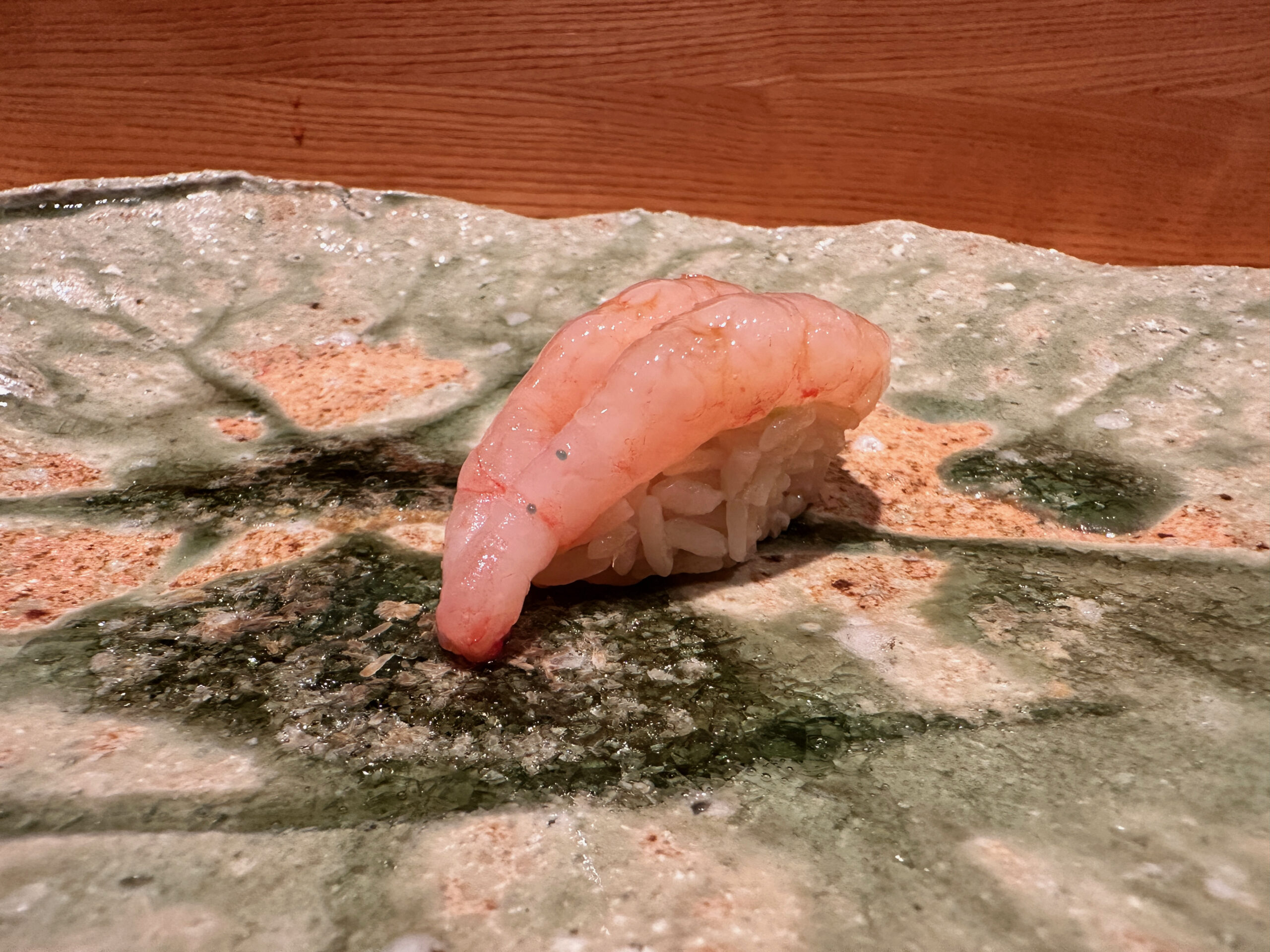
13: Ama Ebi
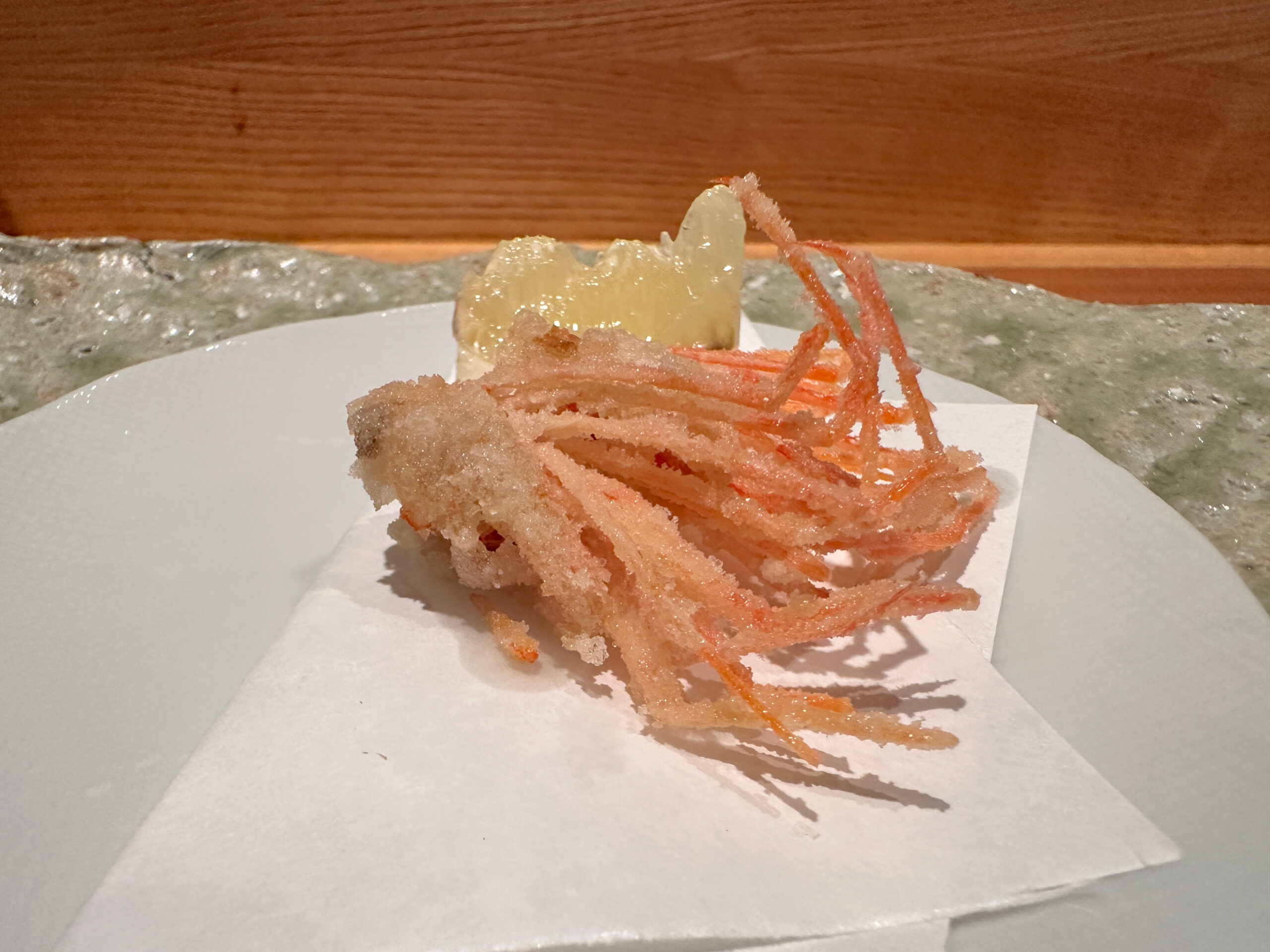
Heads are served – AS THEY SHOULD BE.
Notice anything about the Hon Maguro?
Nothing’s been added except for a slight brush of nikiri (the sushi legend’s secret sauce). No blowtorching. No caviar. No uni. Just an Edomae classic. And look at the fat pooling on the bottom left. I think I experienced Event Horizon.
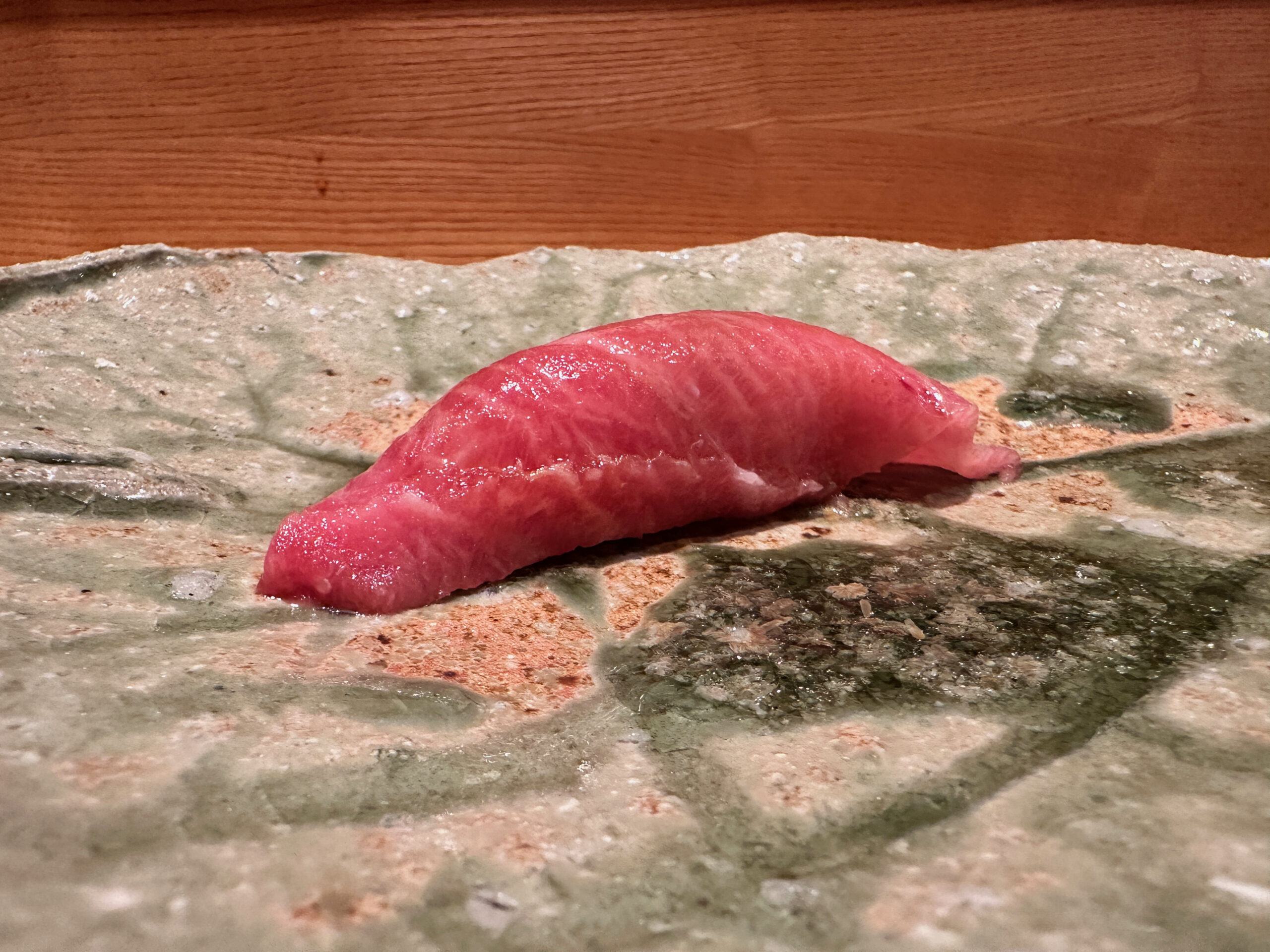
14: O Toro
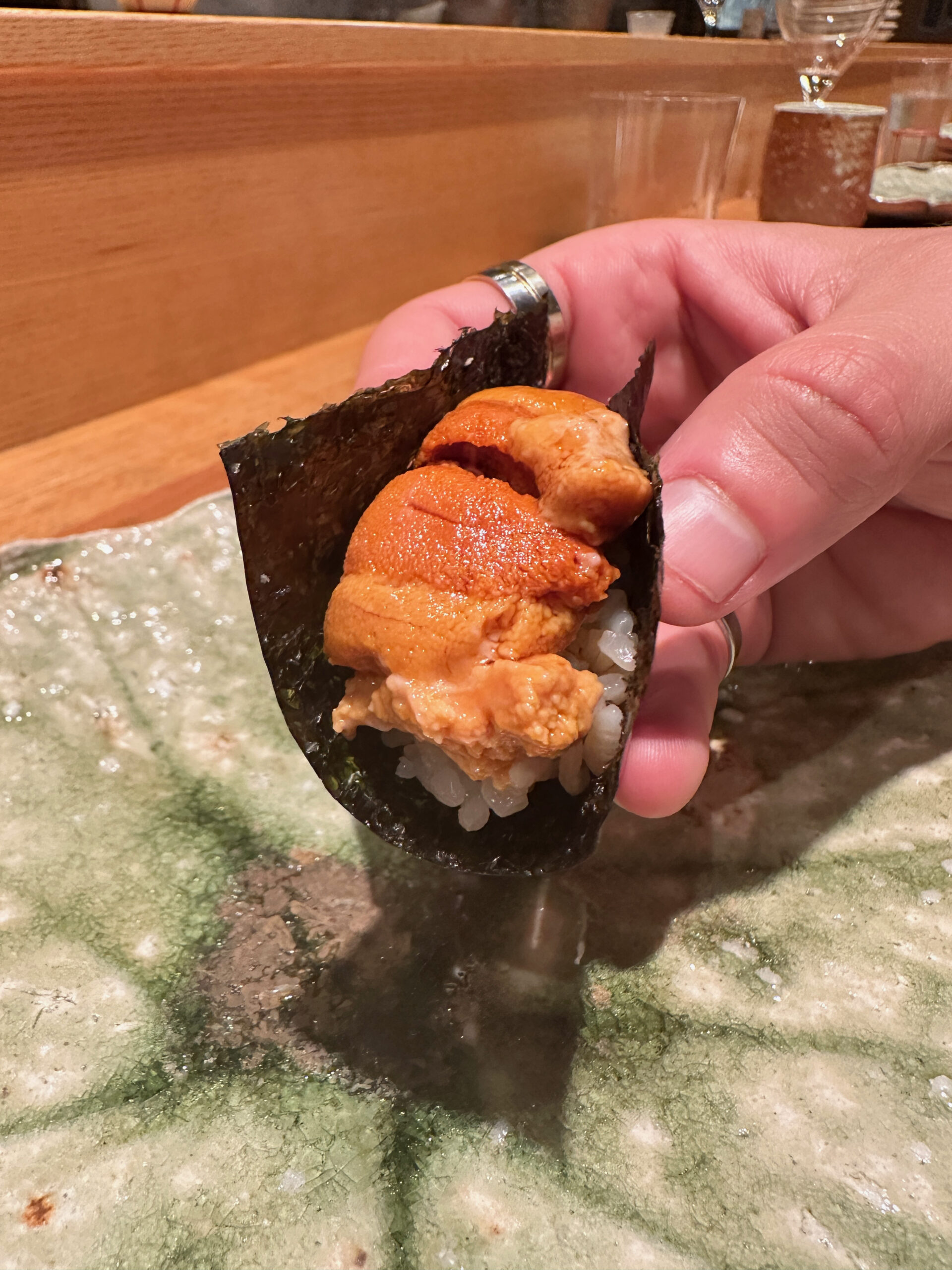
15: Uni (thanks to dining partner for posing here – no I don’t know why he wears those rings). Much better than the brown stuff earlier.
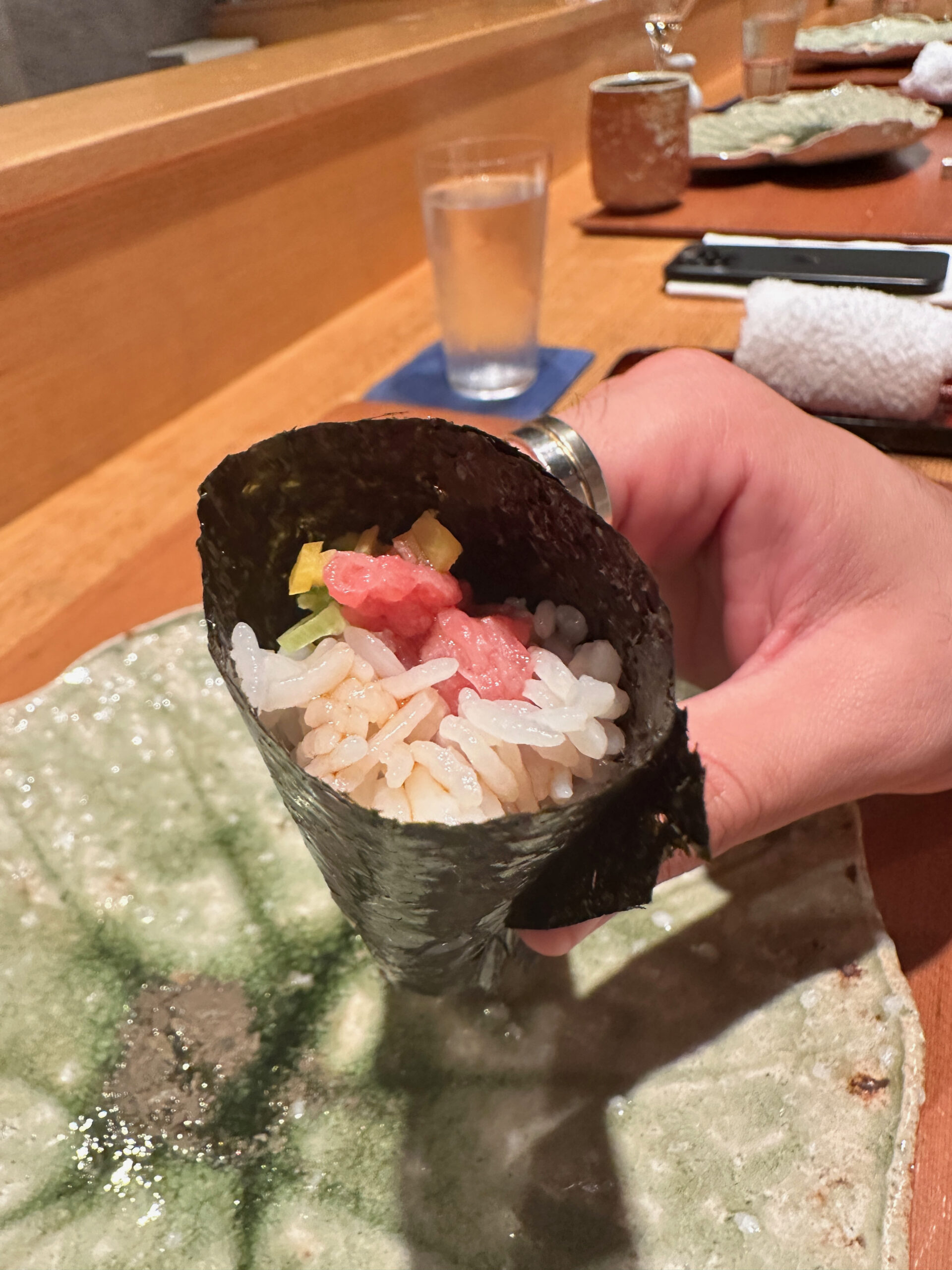
16: Toro Taku. Same friend. Same bizarre rings.
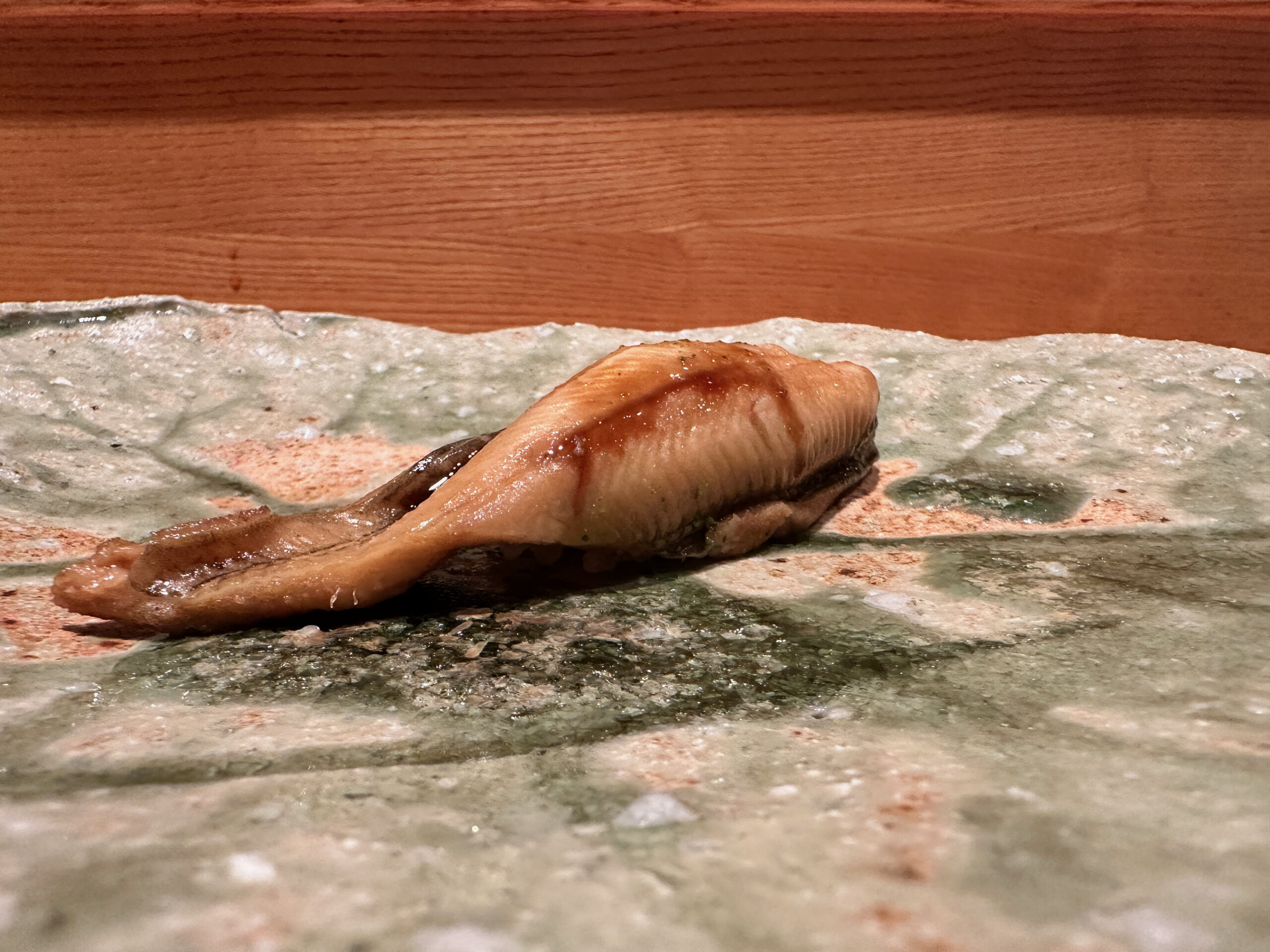
17: Anago
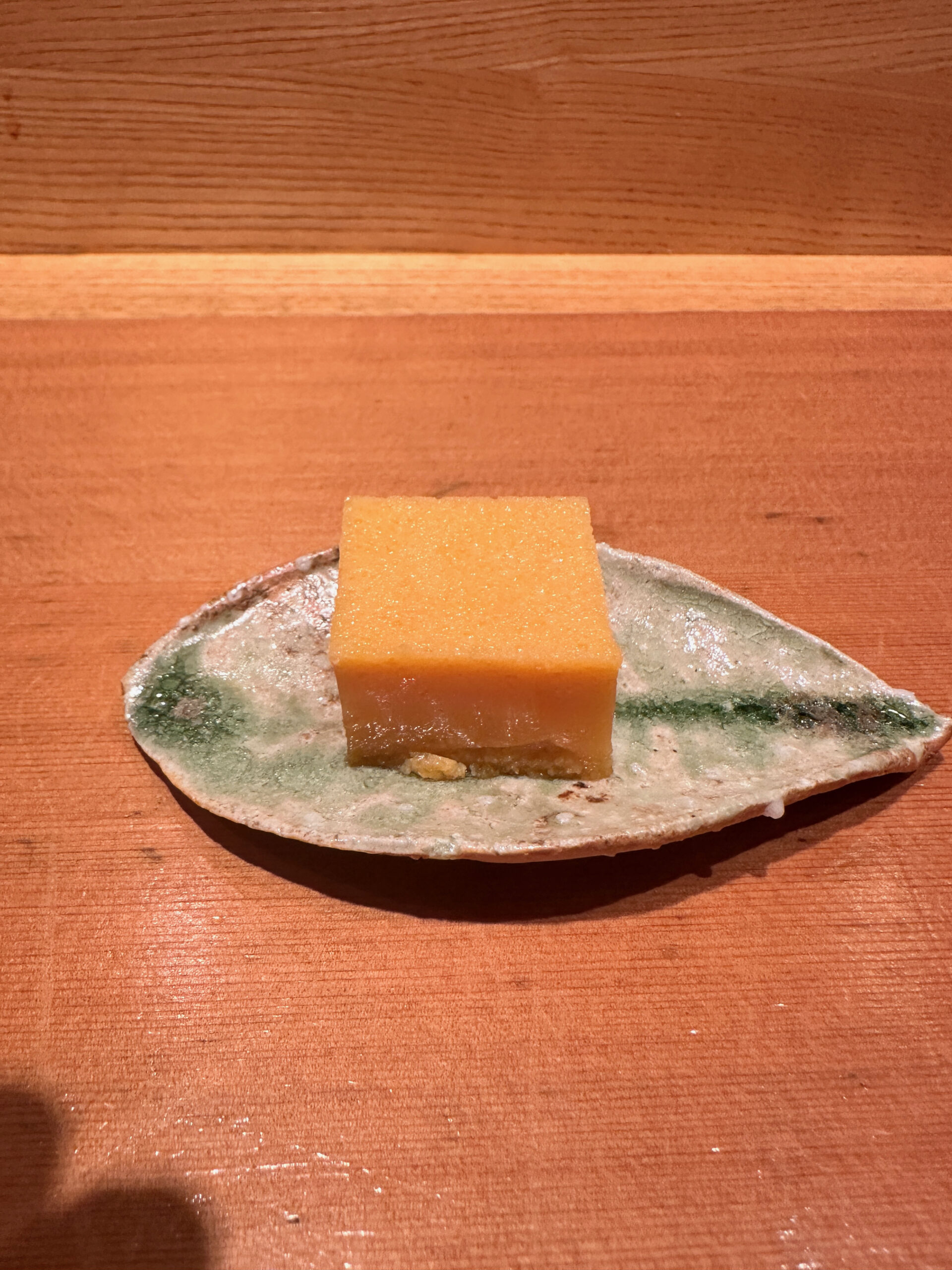
18: Tamago
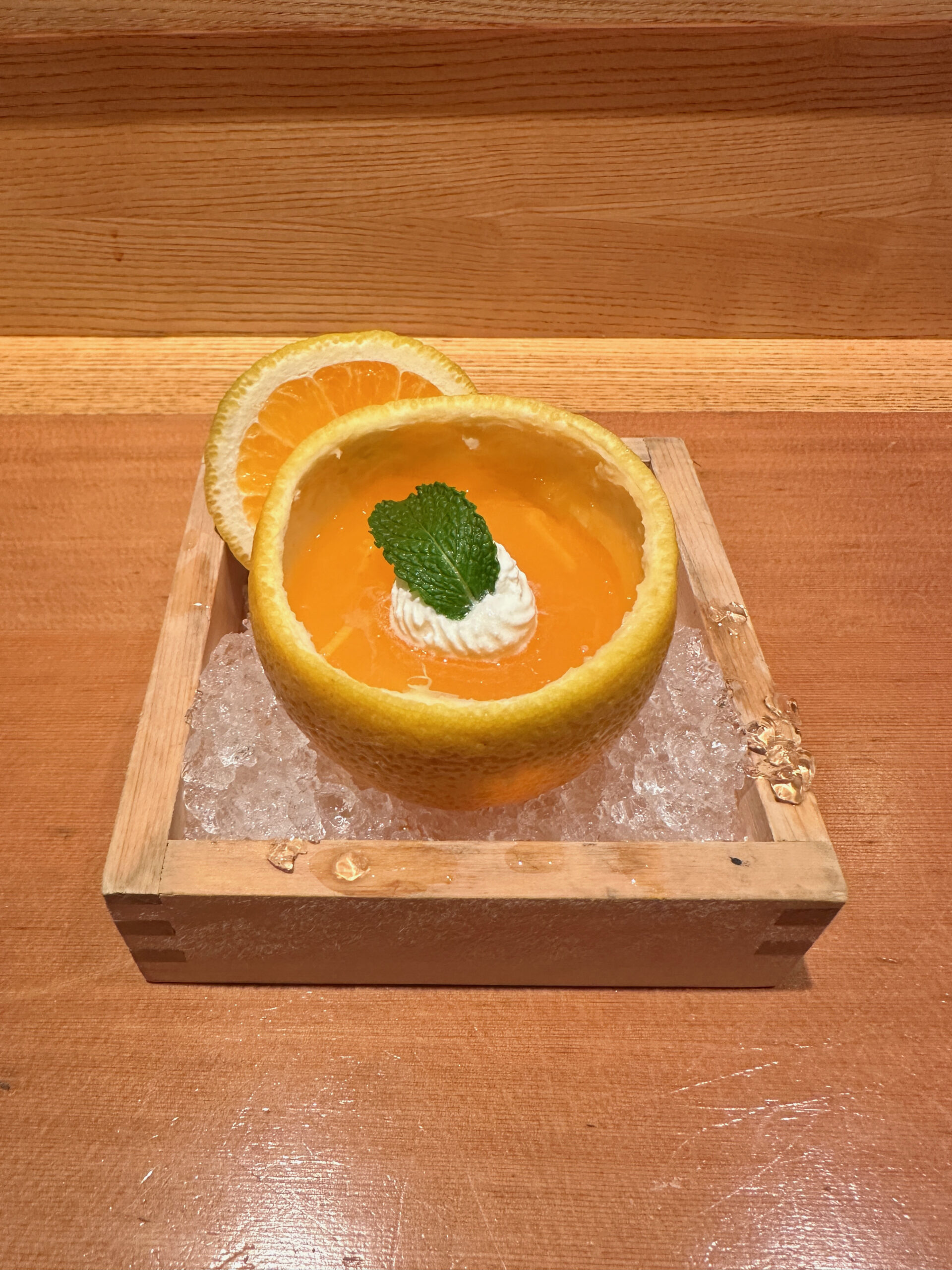
19: Orange with jelly (yes more jelly)
A quick word on the service
Some of the best in New York, even more impressive considering that there’s just one server. His name’s Kohei, and I have zero clue how he handles the entire eight-person counter plus the a la carte tables that sit behind the backs of counter customers. Get the man a vacation.
It’s also clear the room wasn’t initially intended to be an Omakase room. The first six courses are staged on tables at the back, a fairly awkward experience.
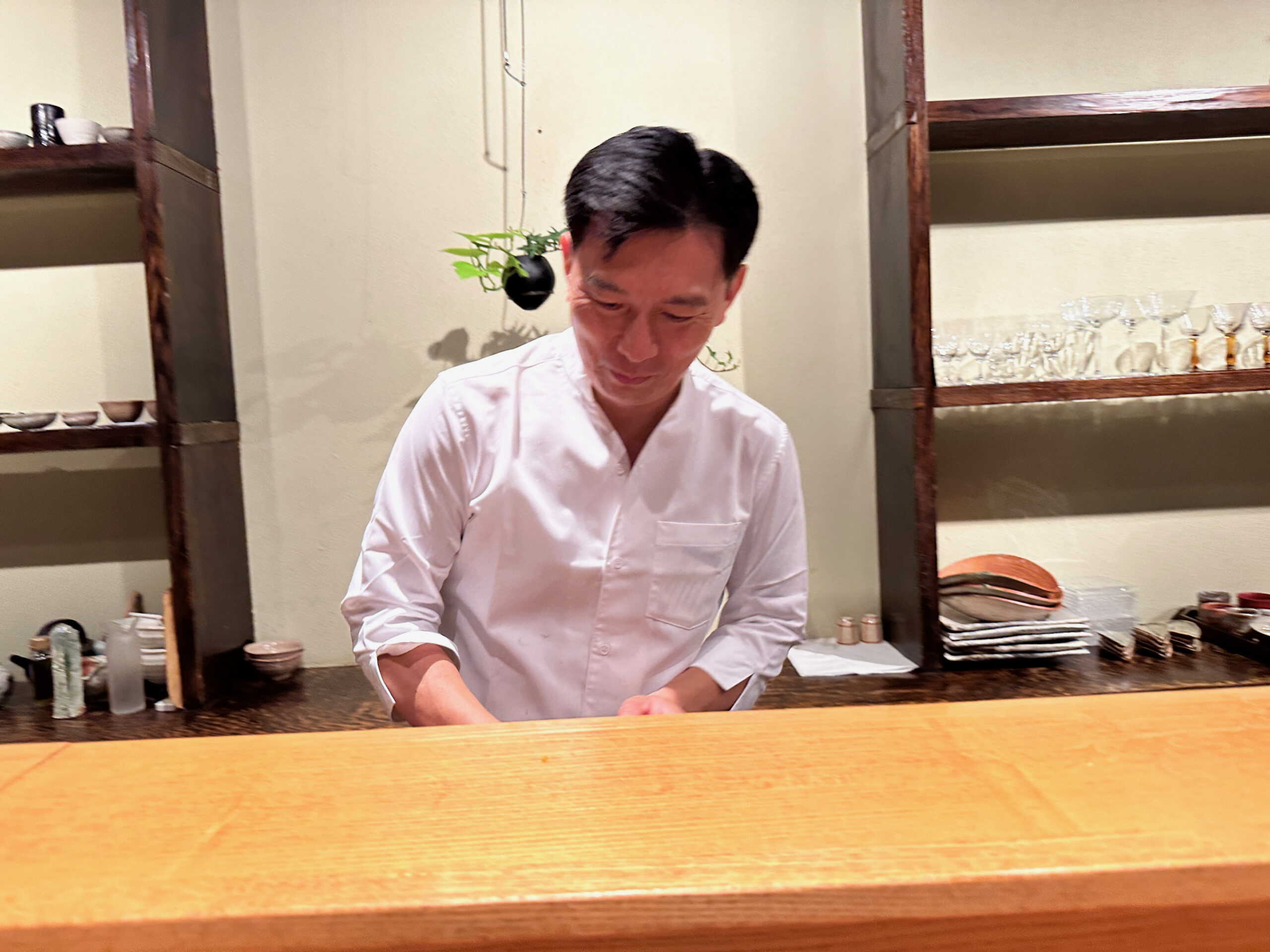
Nobu-san
The path forward at Kanoyama seems pretty simple
This is truly one of New York’s quintessential sushiya. But if they’re going to continue an Omakase –which they should – might I suggest a few very quick fixes:
- Keep the Hirame and Karasumi w/ olive oil dish
- Sushi only after that
- Put up some sort of drape for the staging area
- No more jelly (not even half jelly)
- Make the second room Omakase only so poor Kohei doesn’t lose his mind
Et voila, one of New York’s best sushiya. Though as it stands, whether it’s for a la carte, or Omakase, Kanoyama is a winner.
Recommended.
